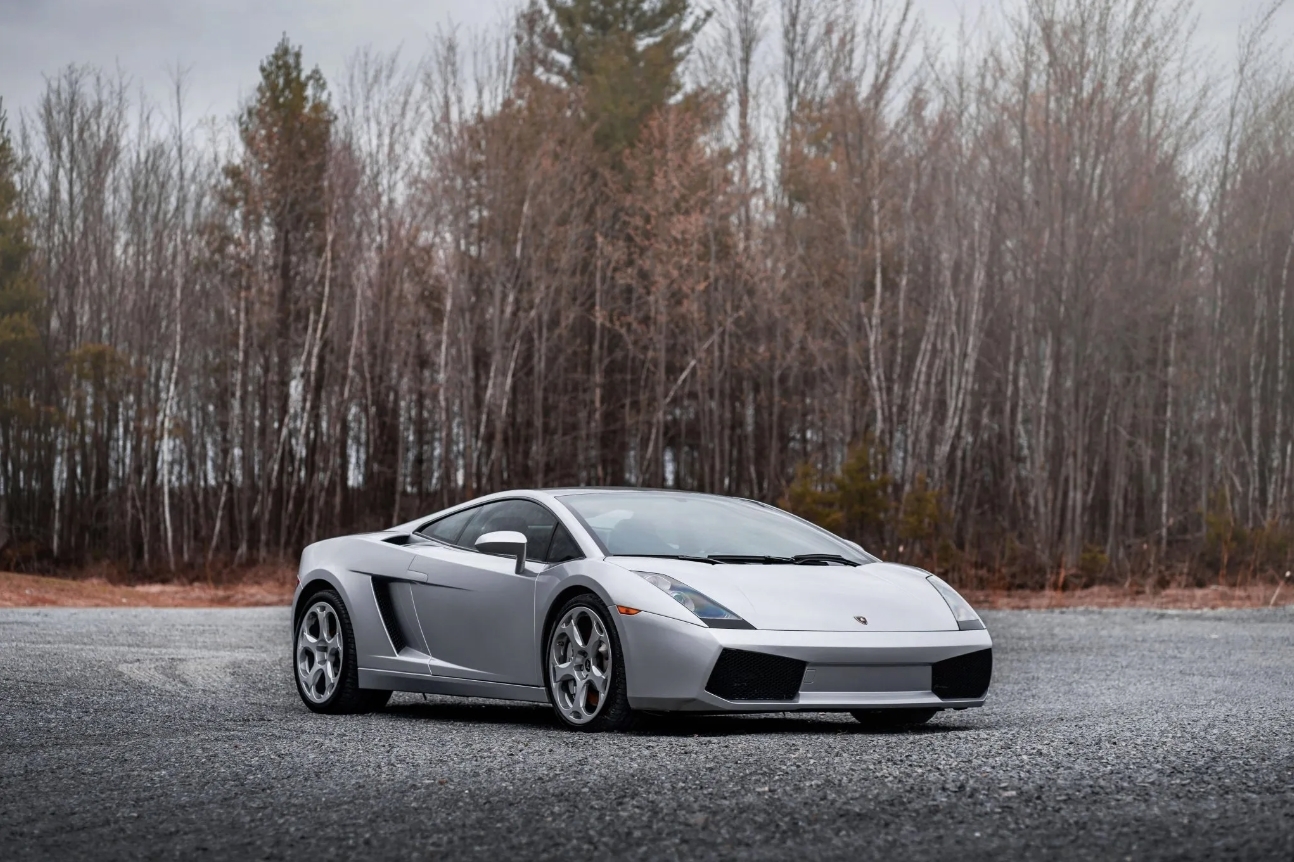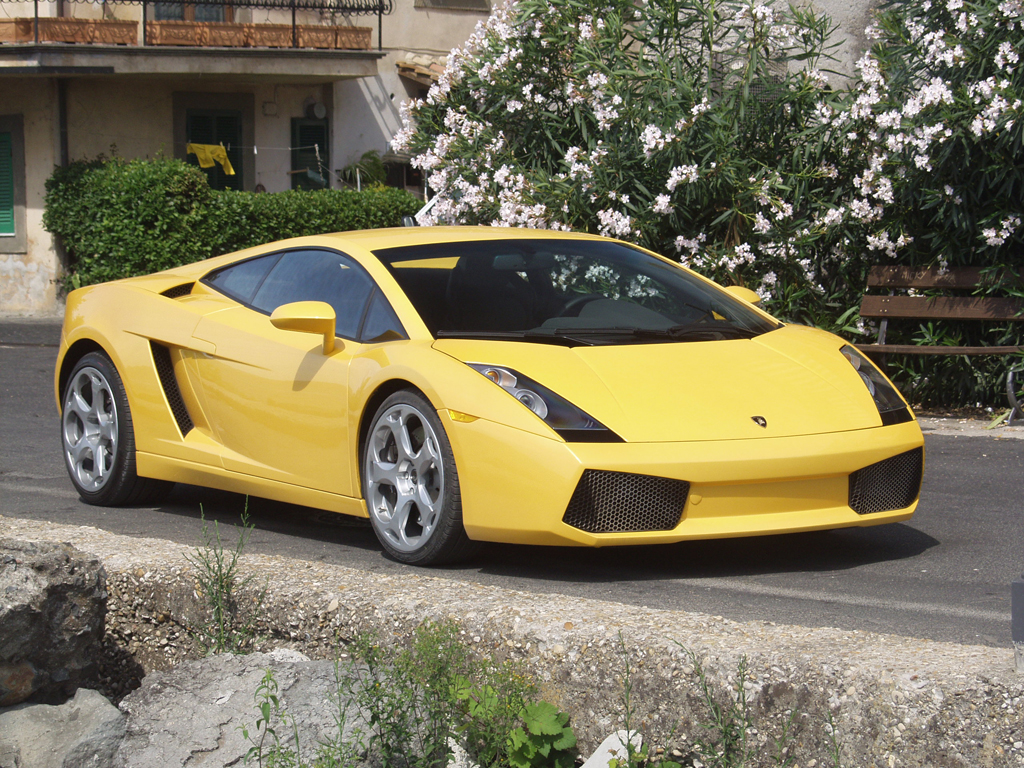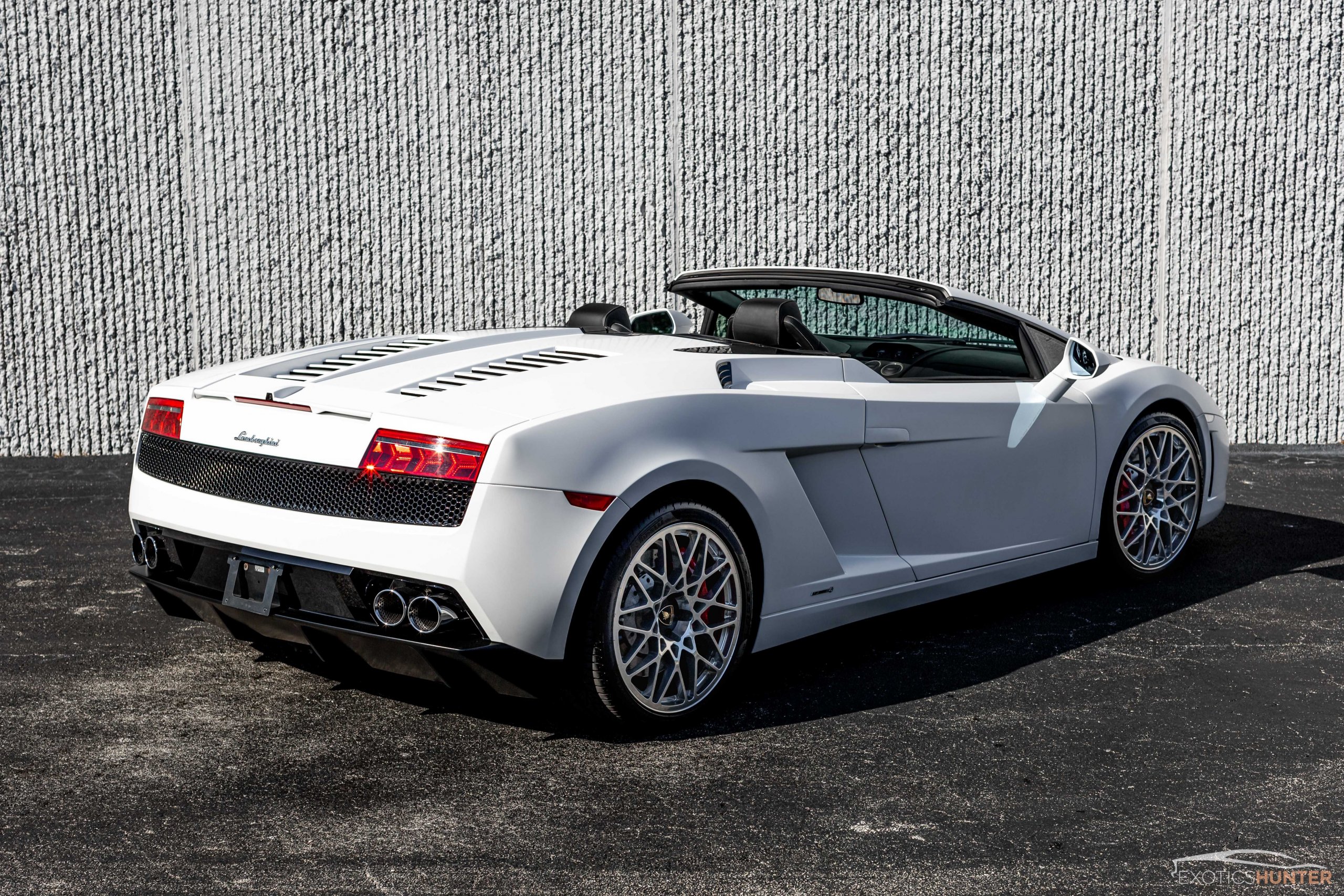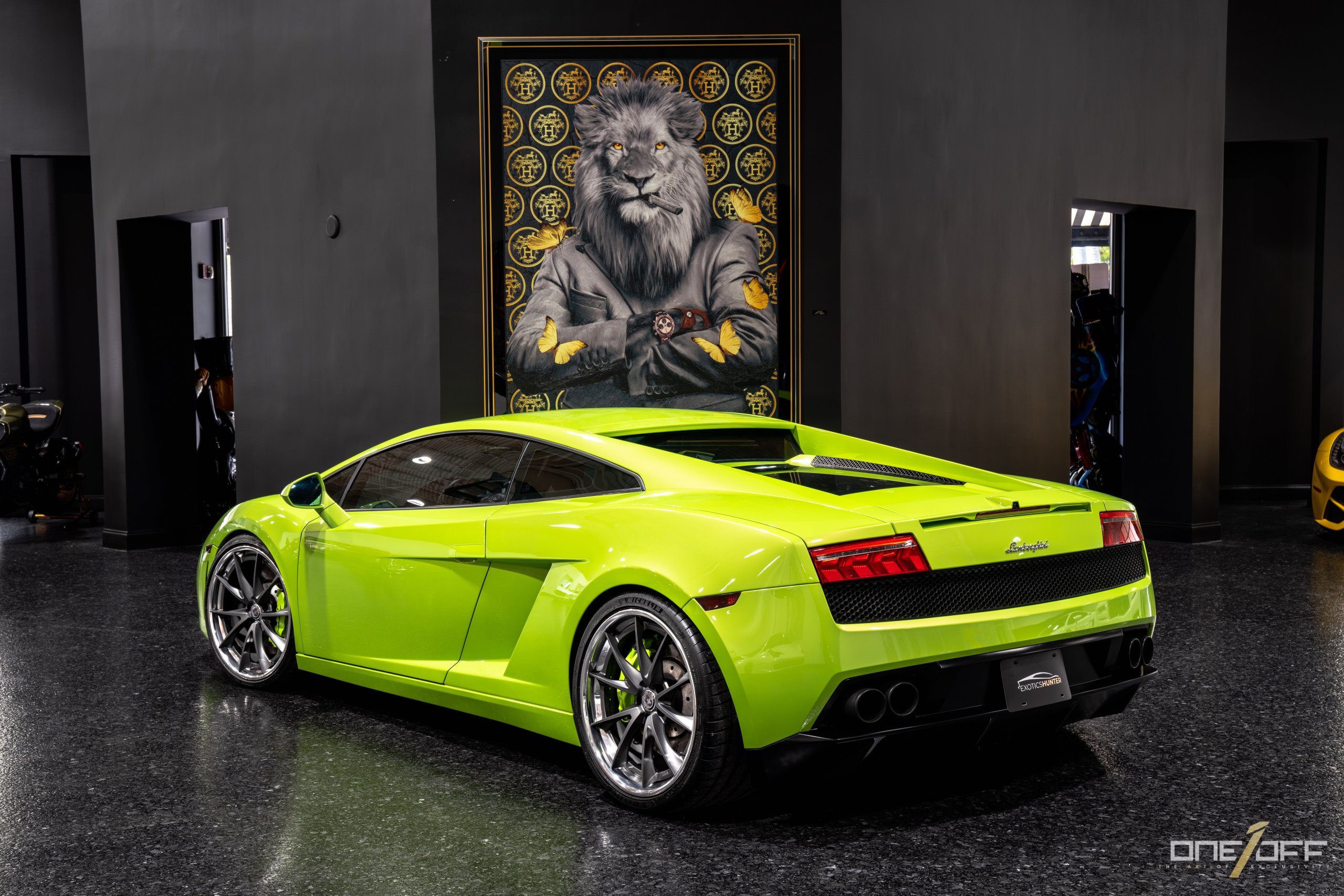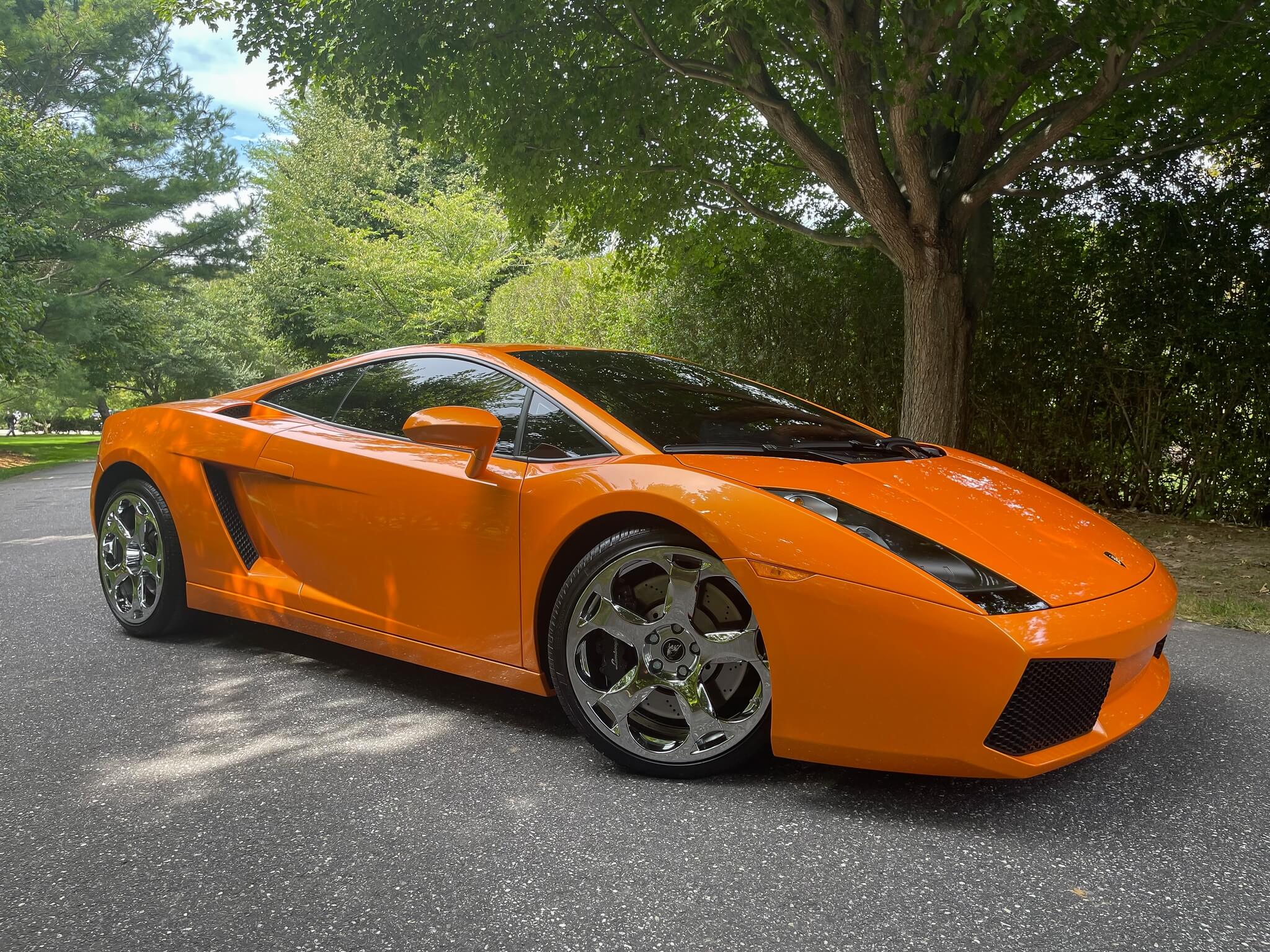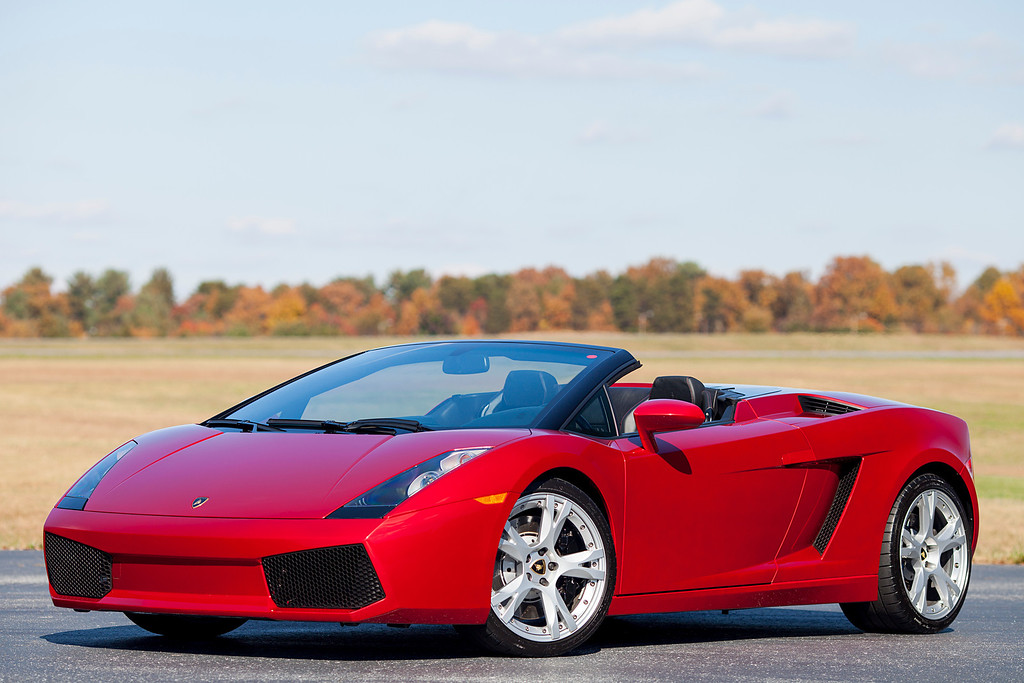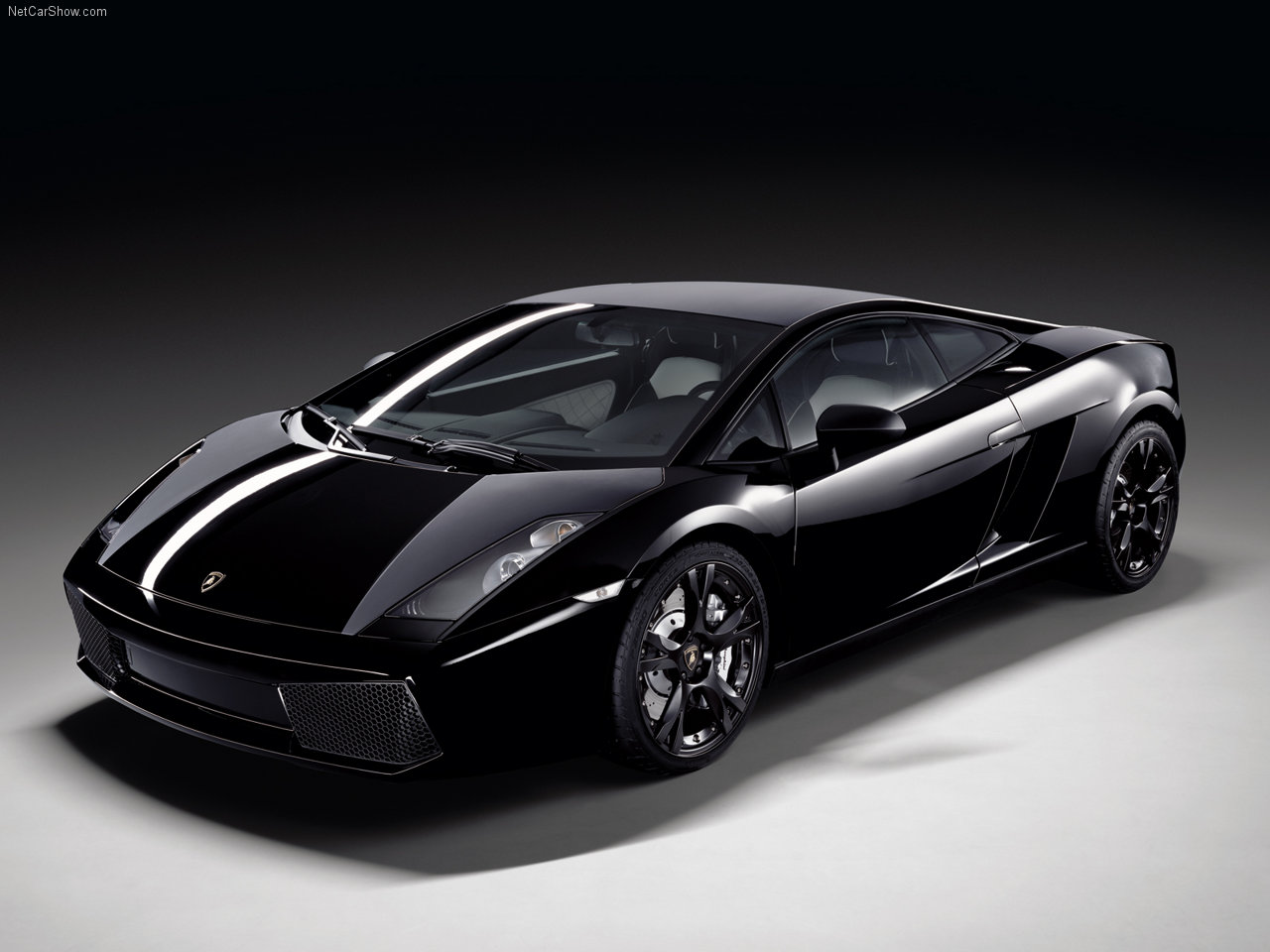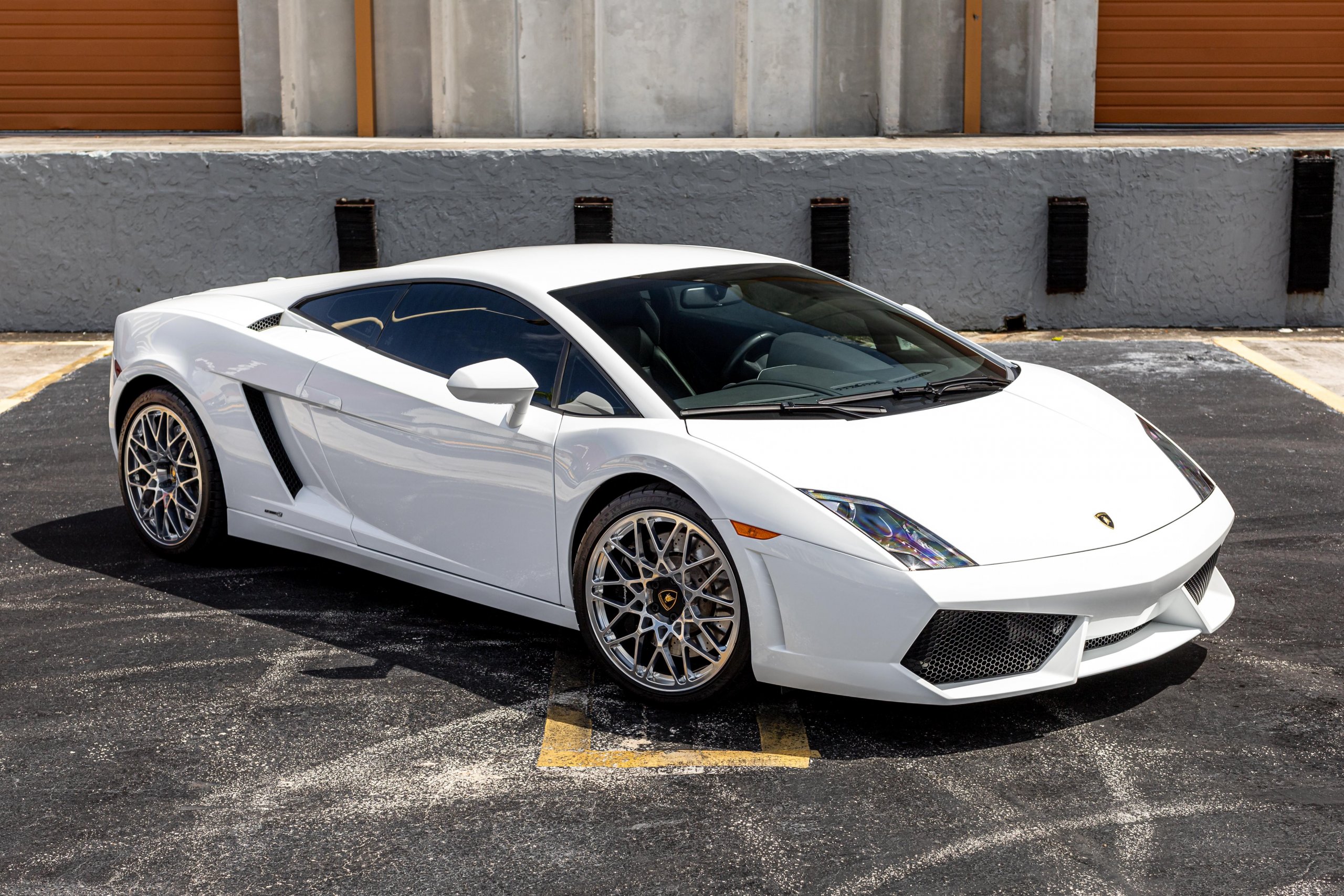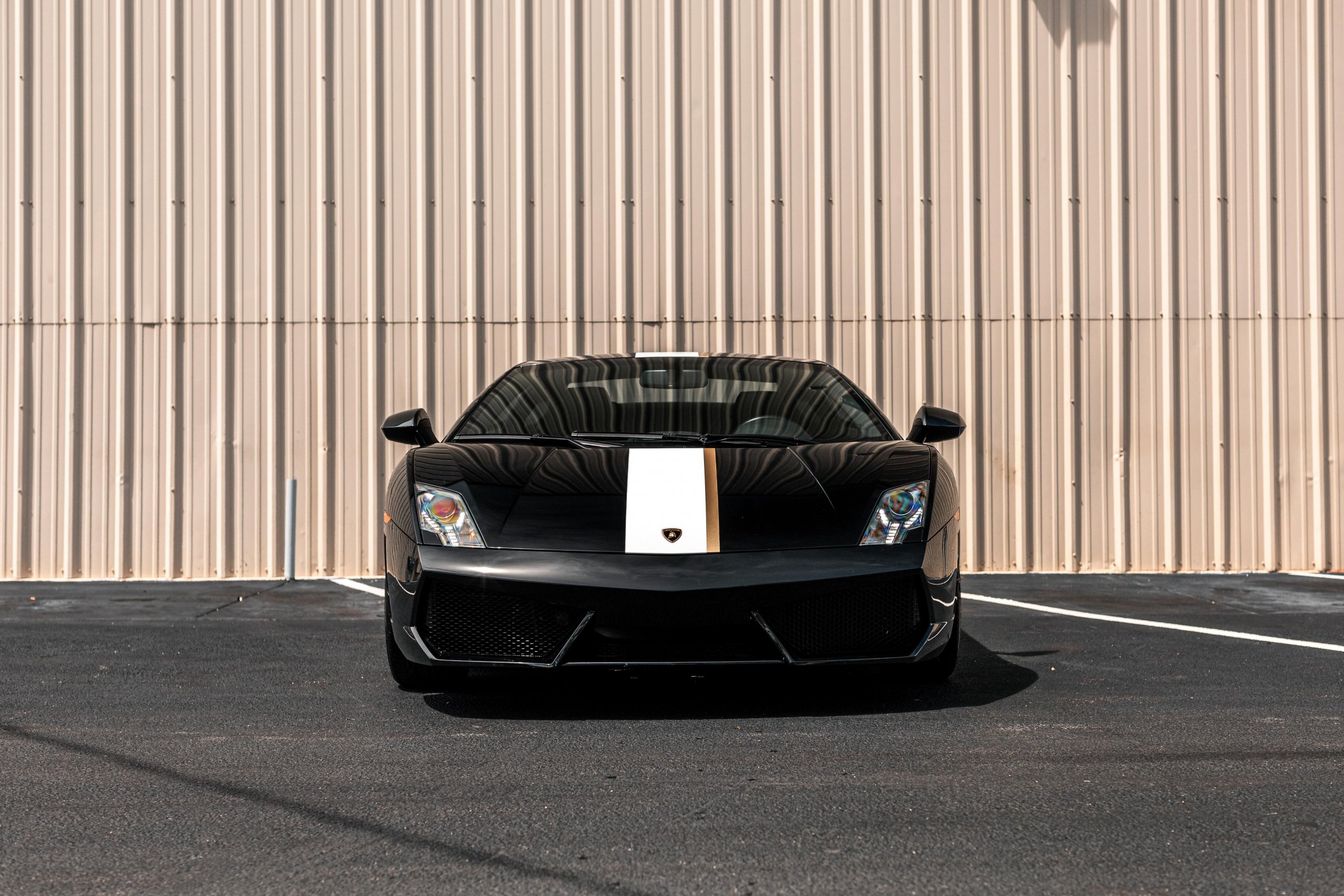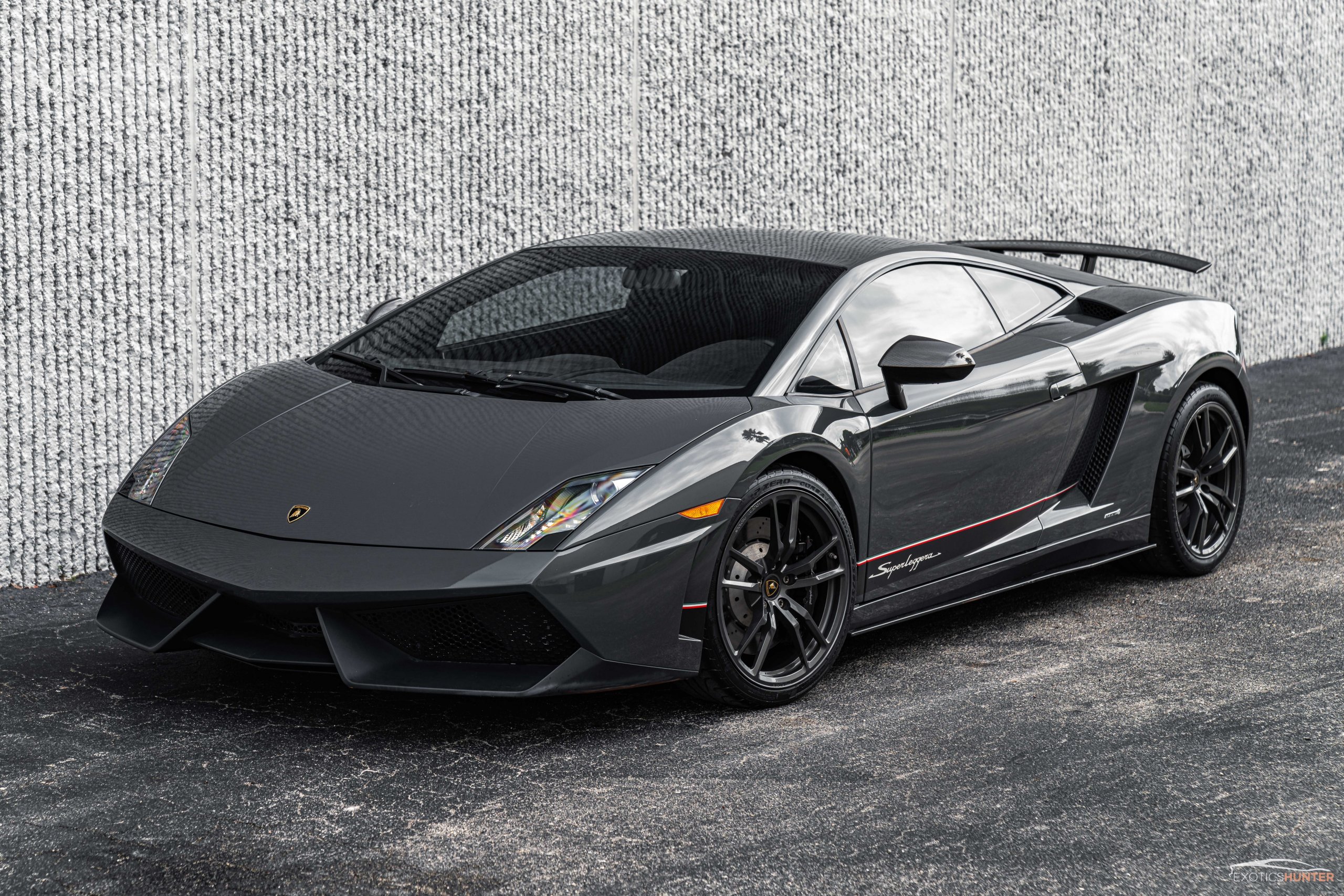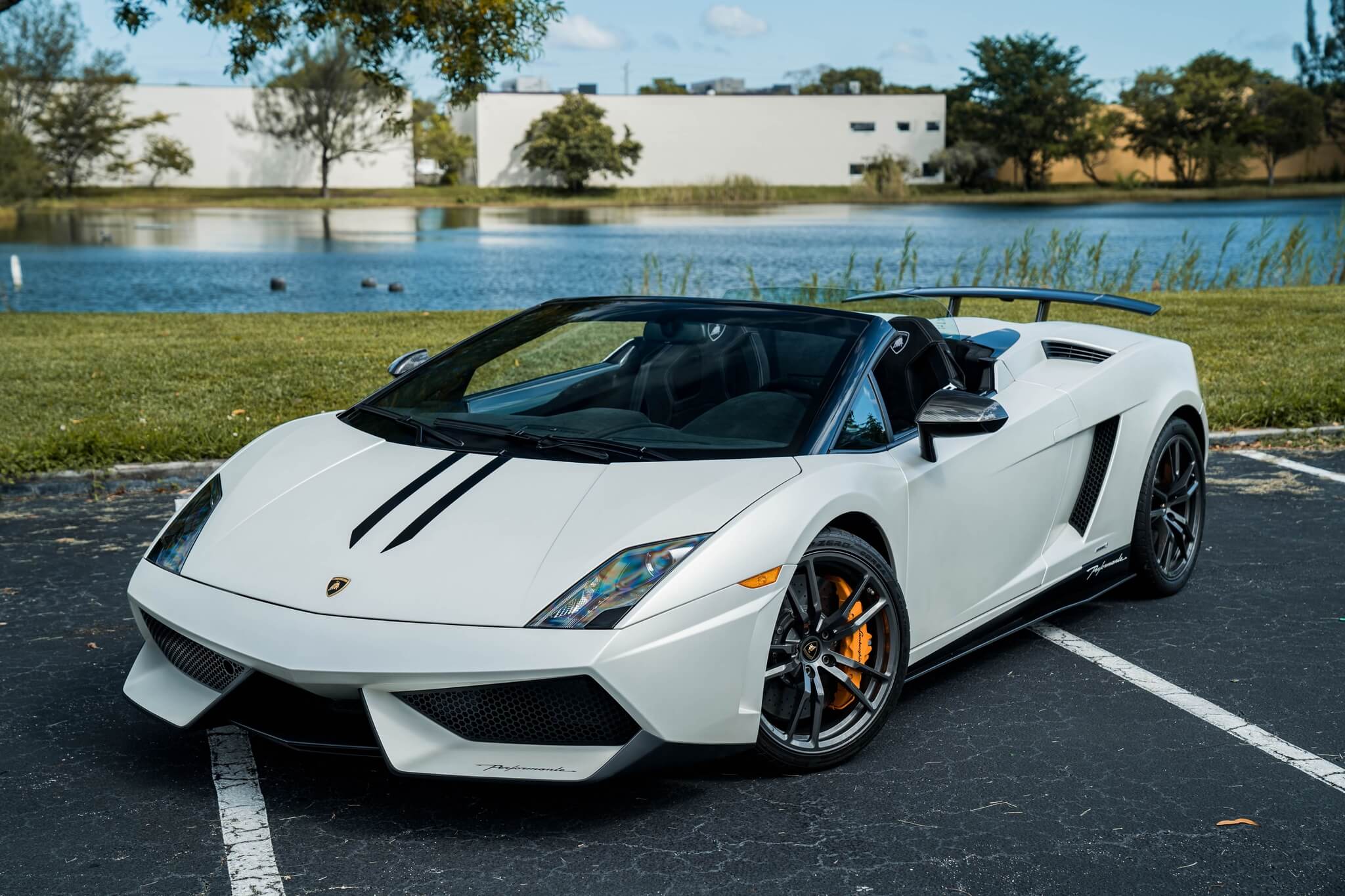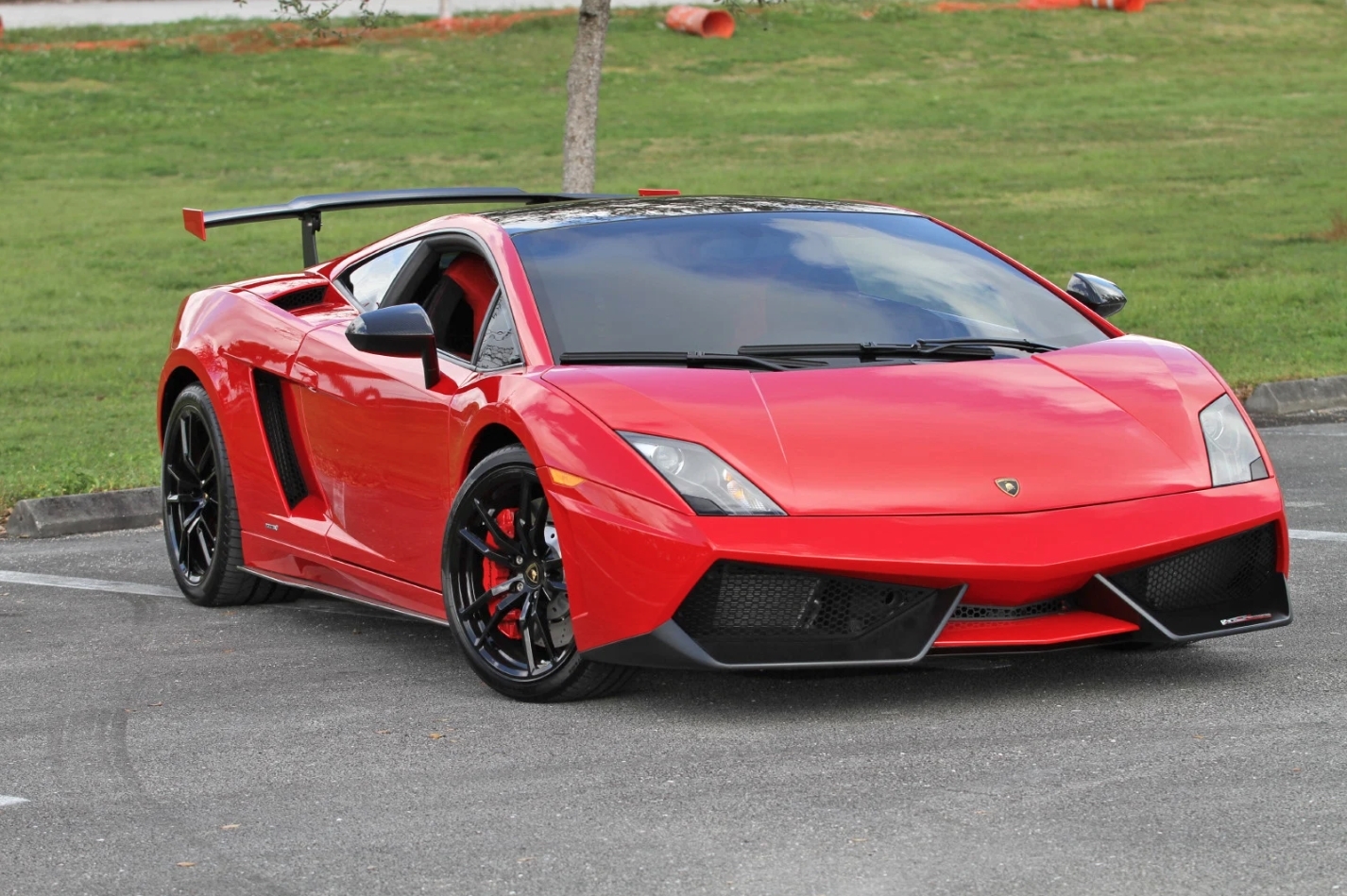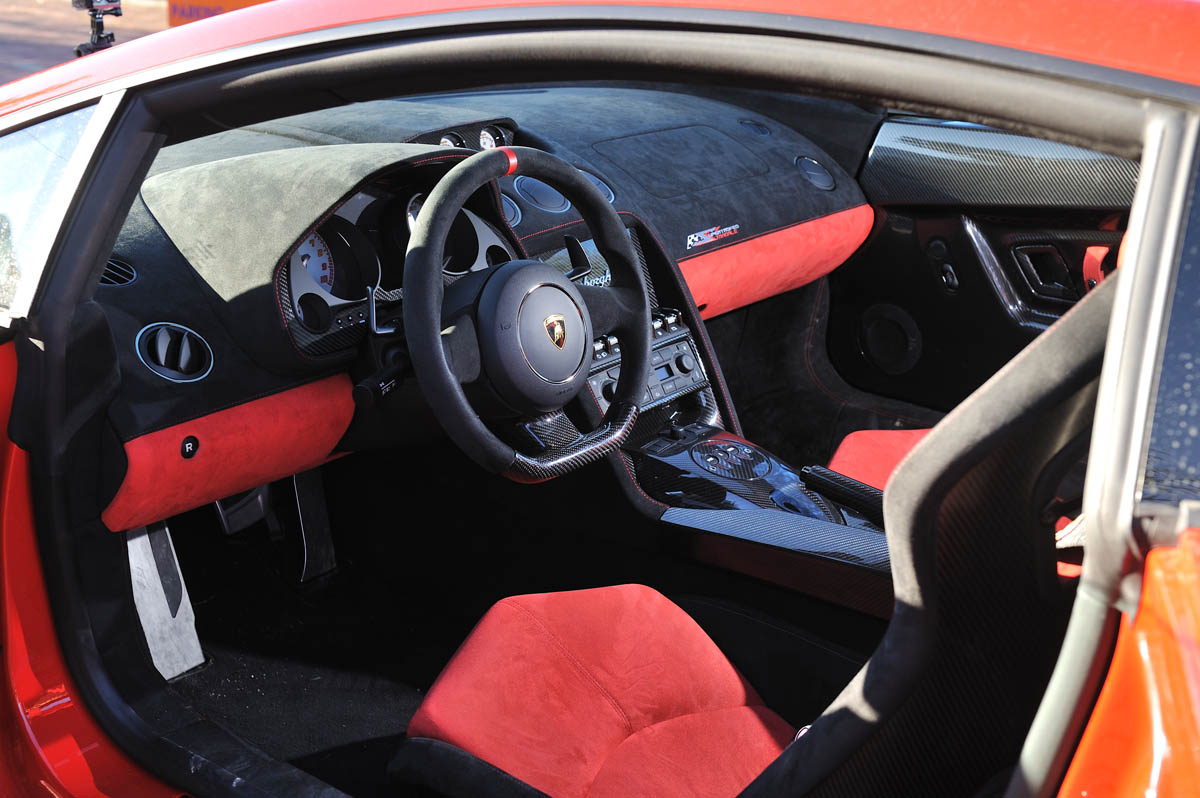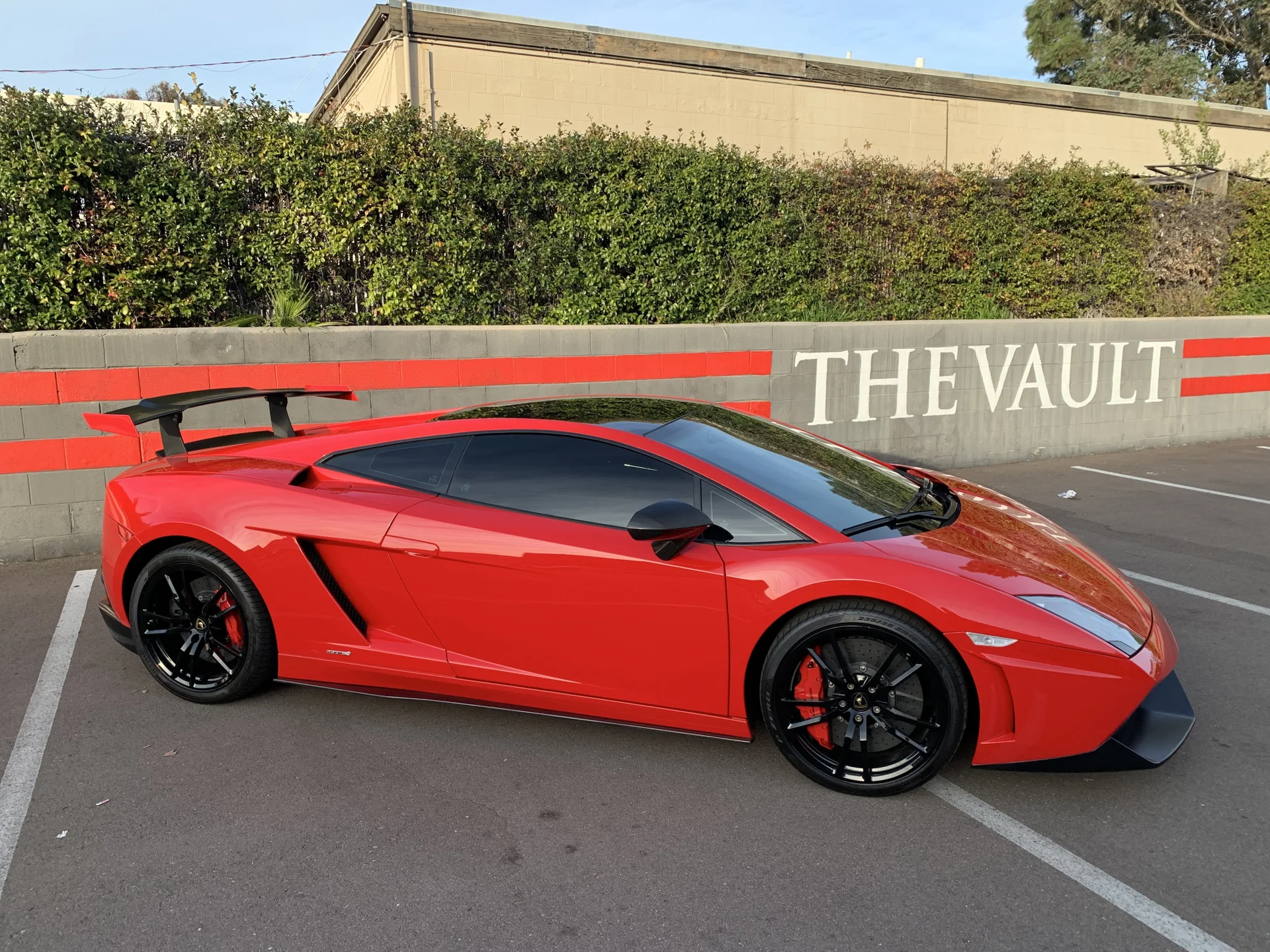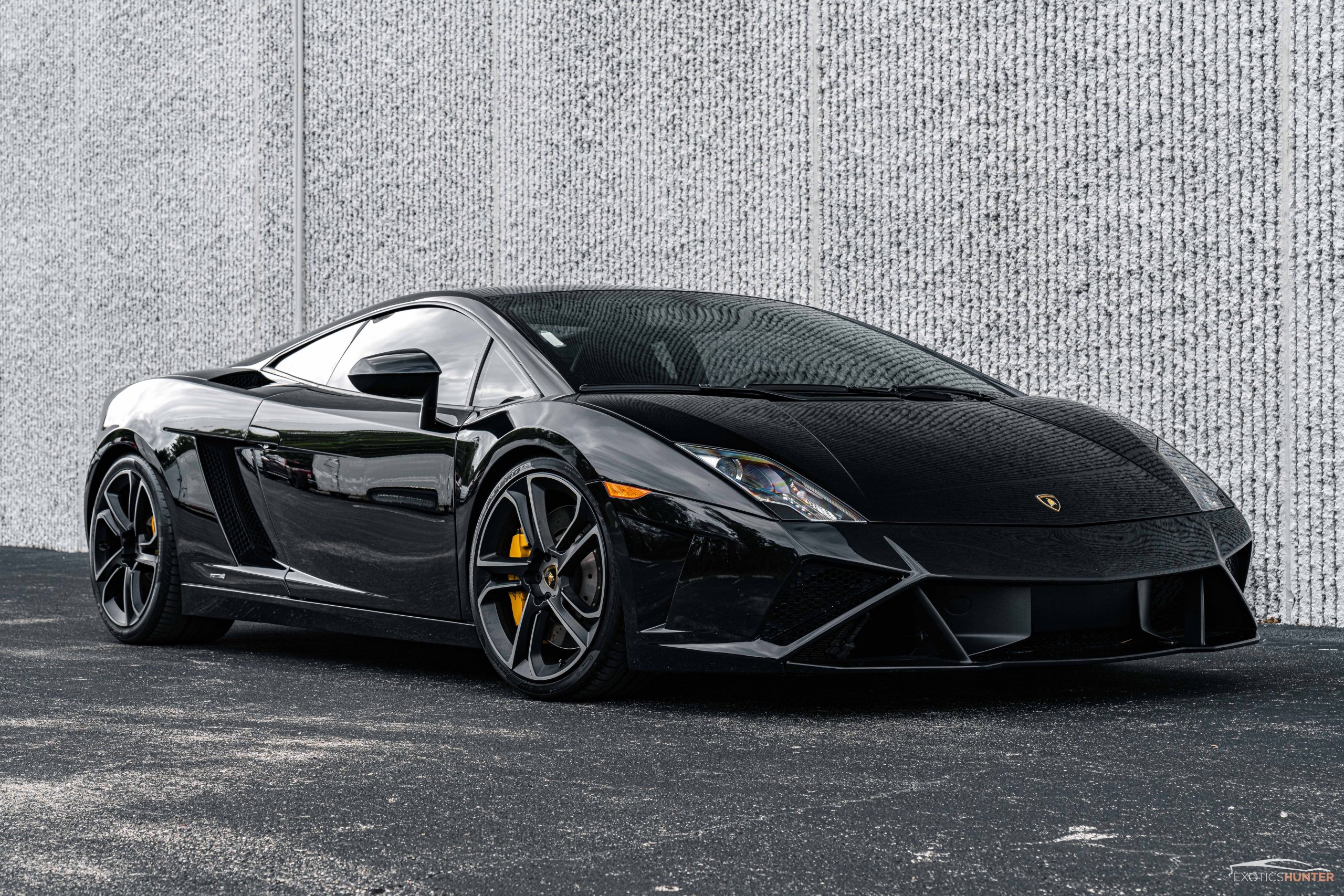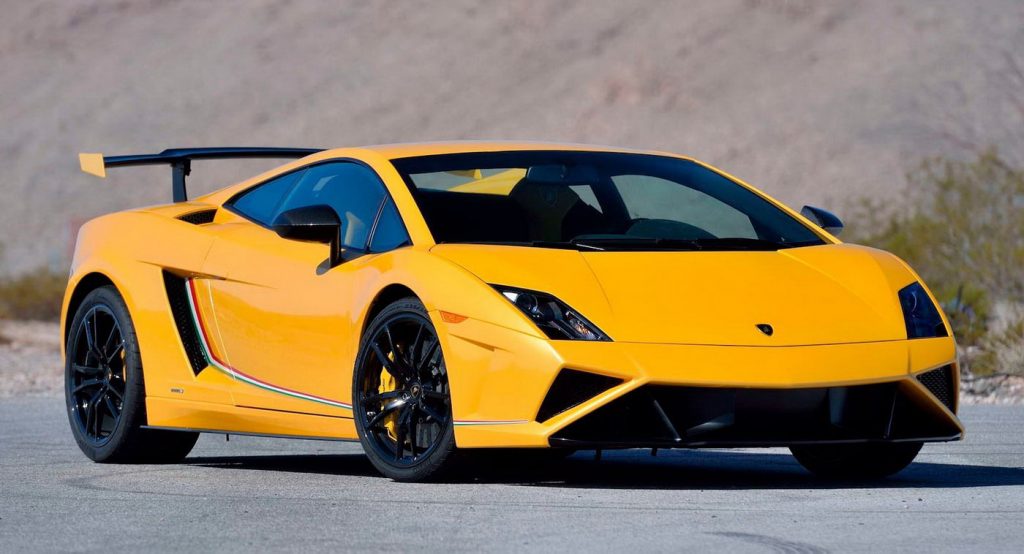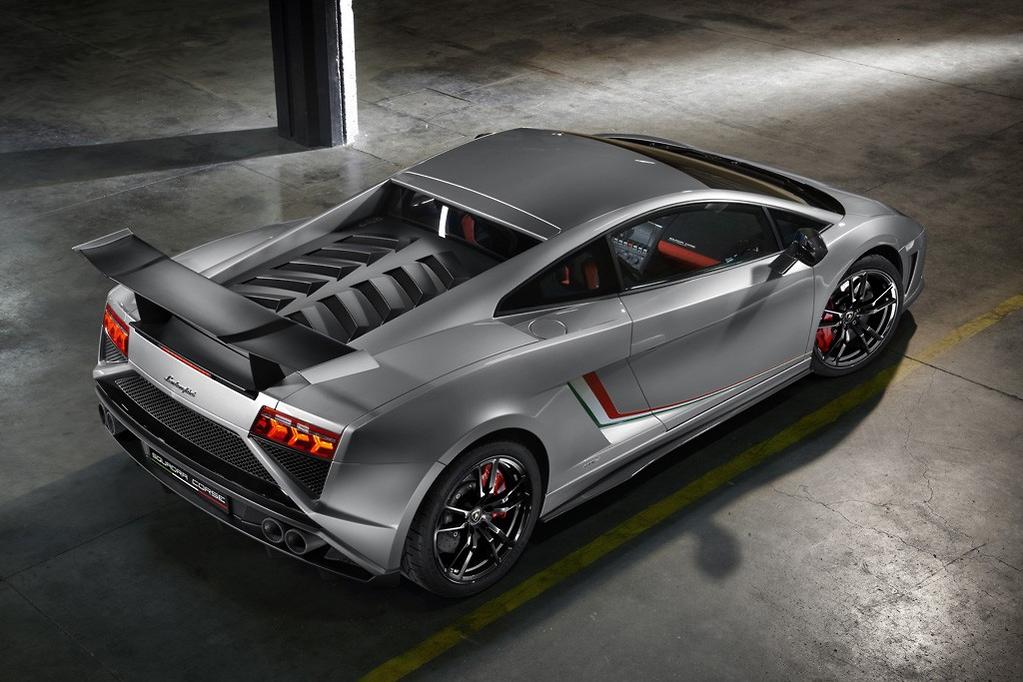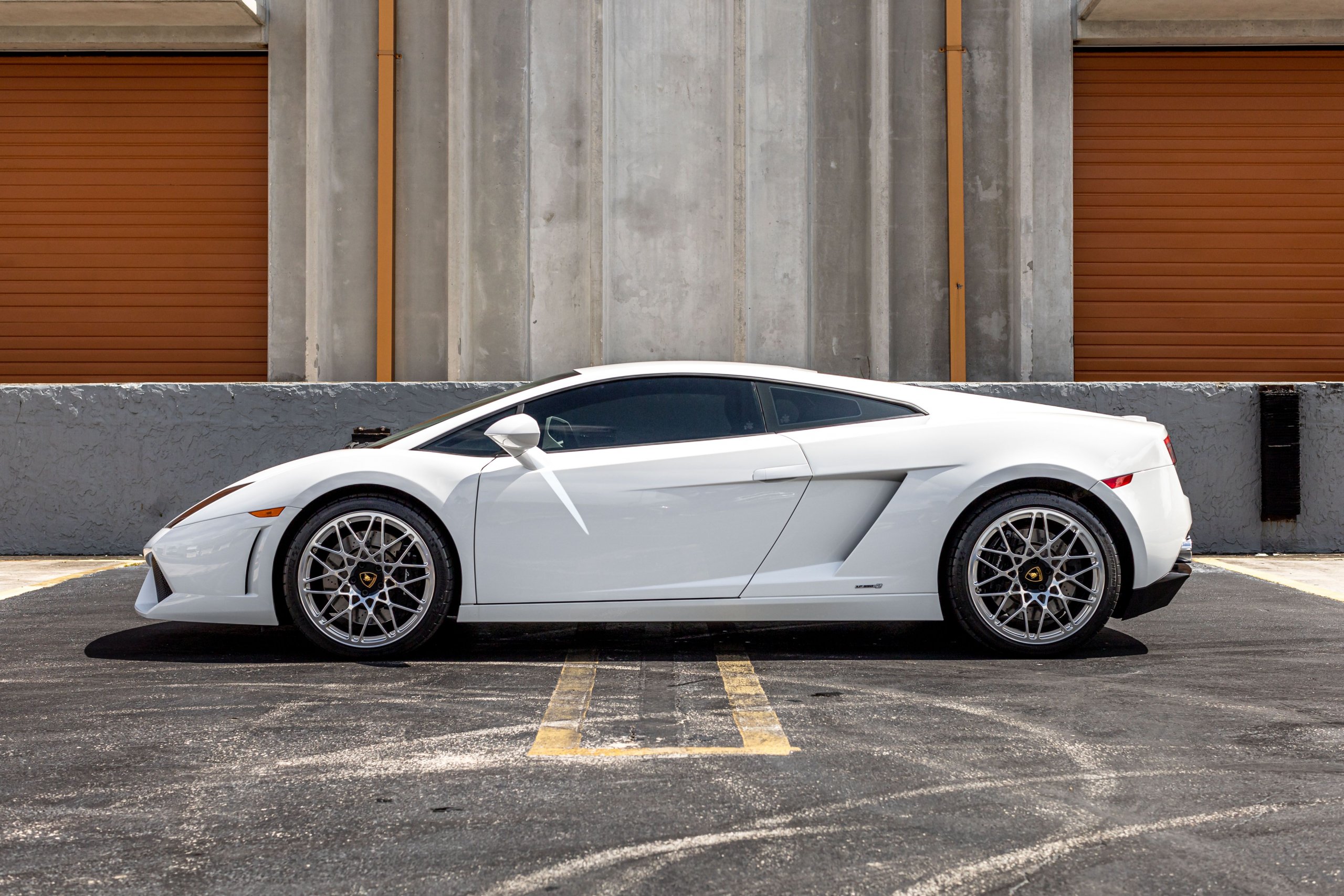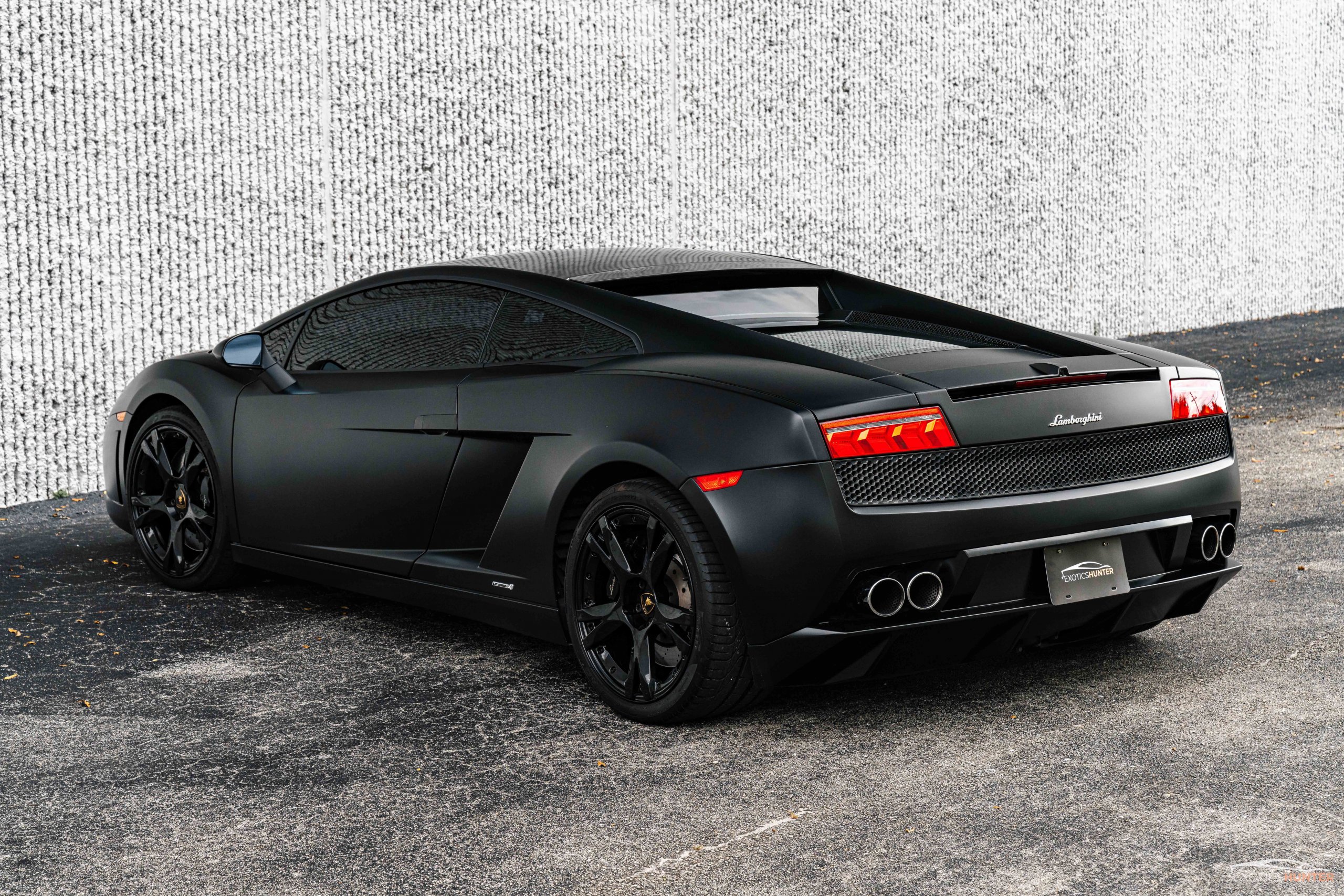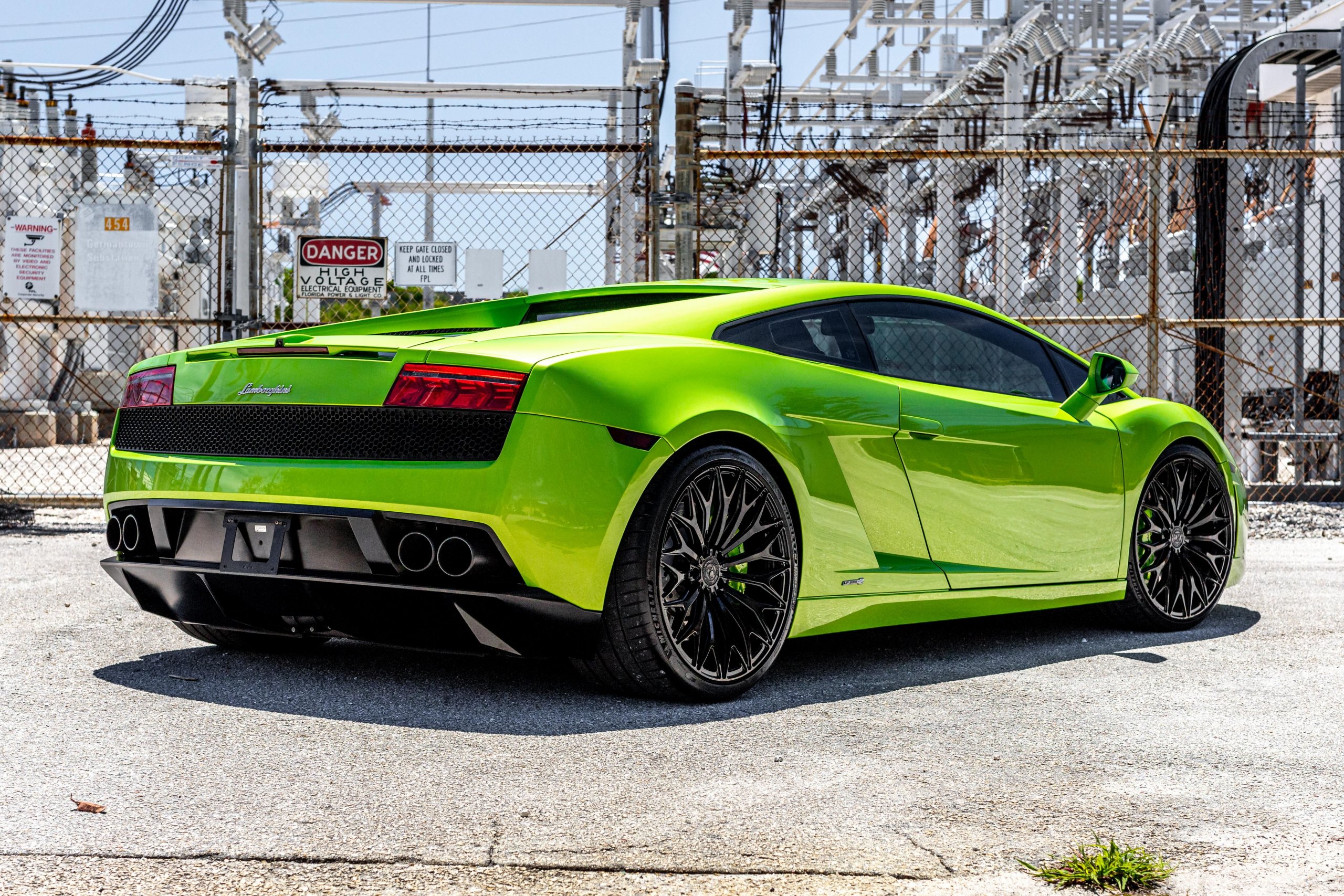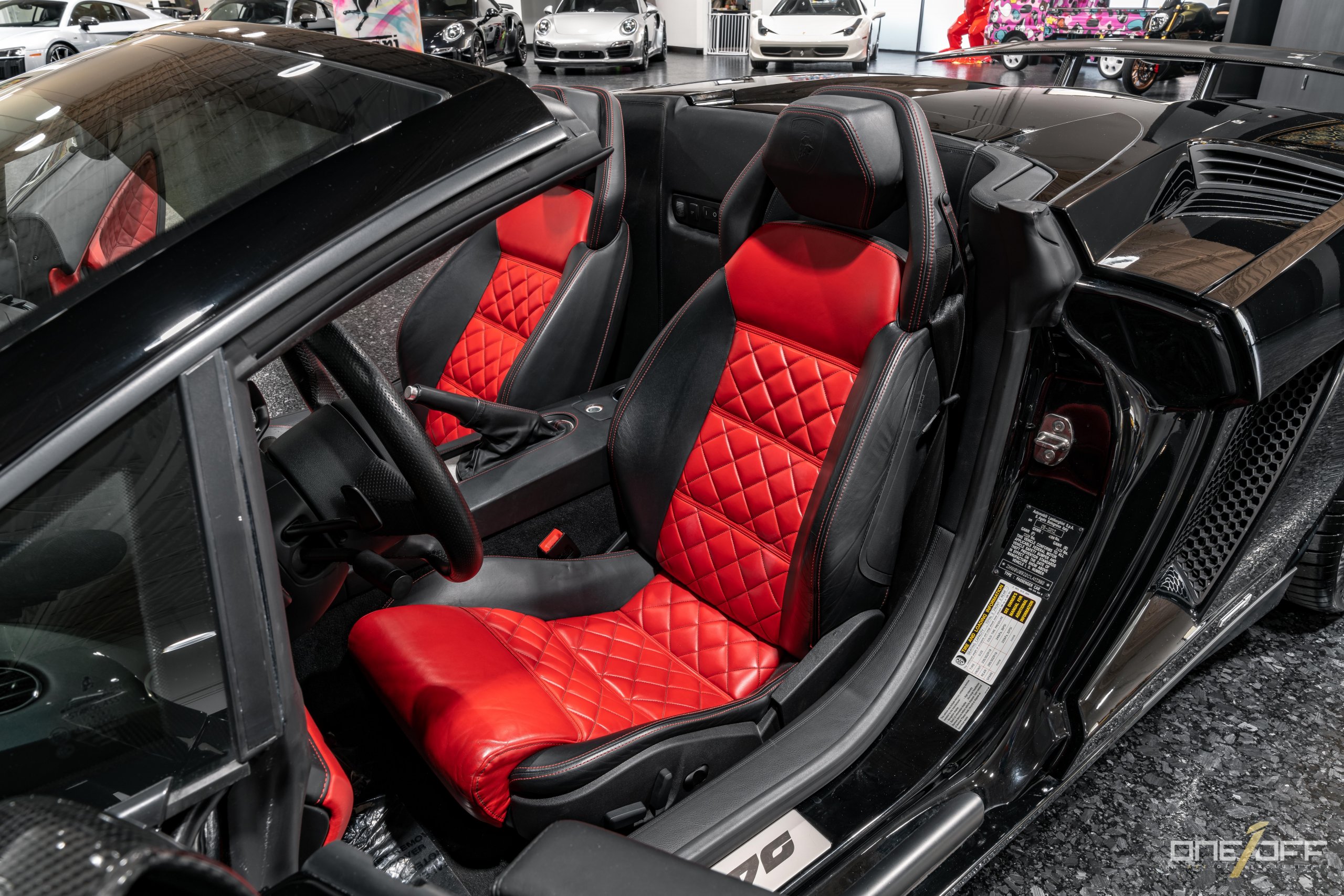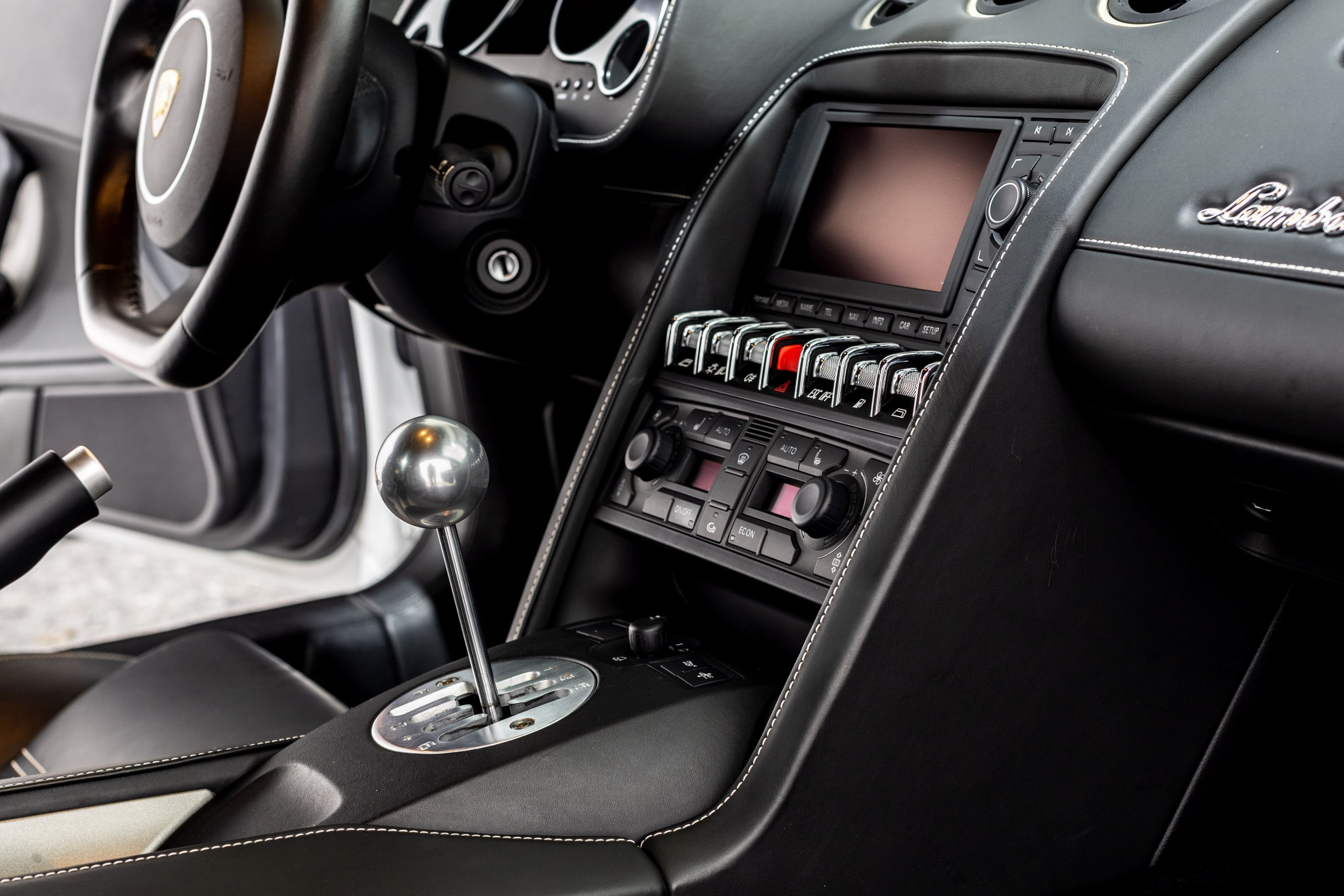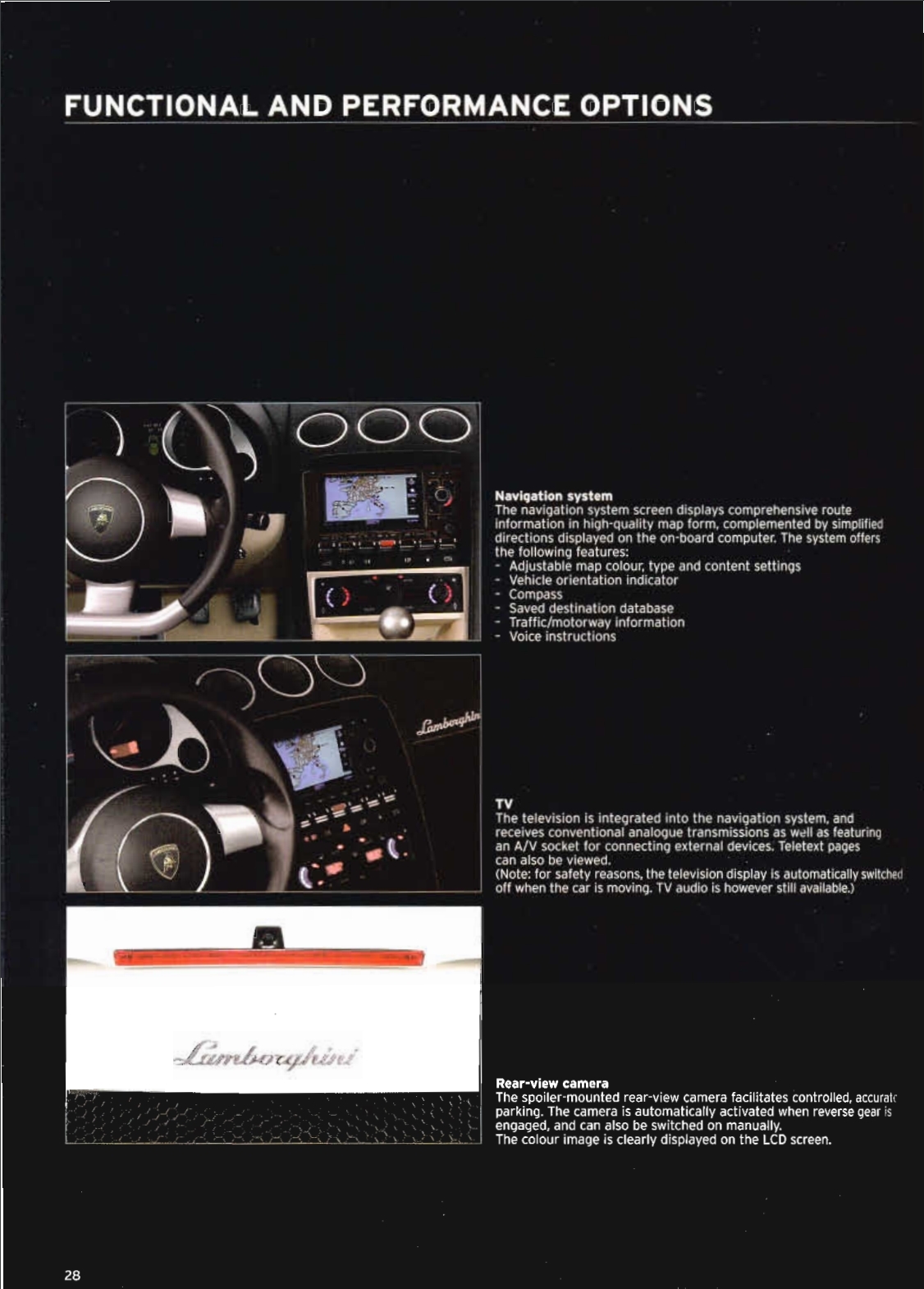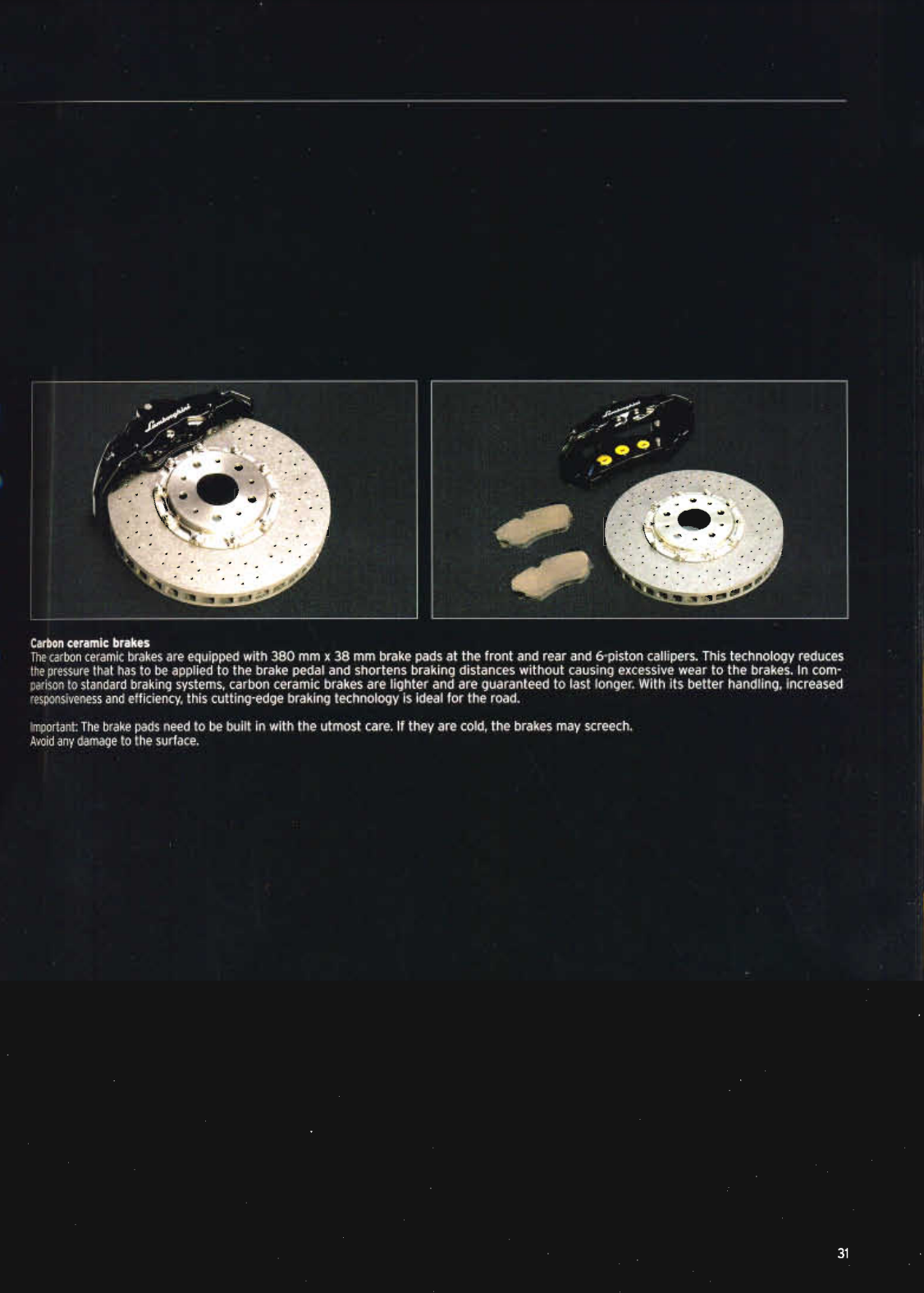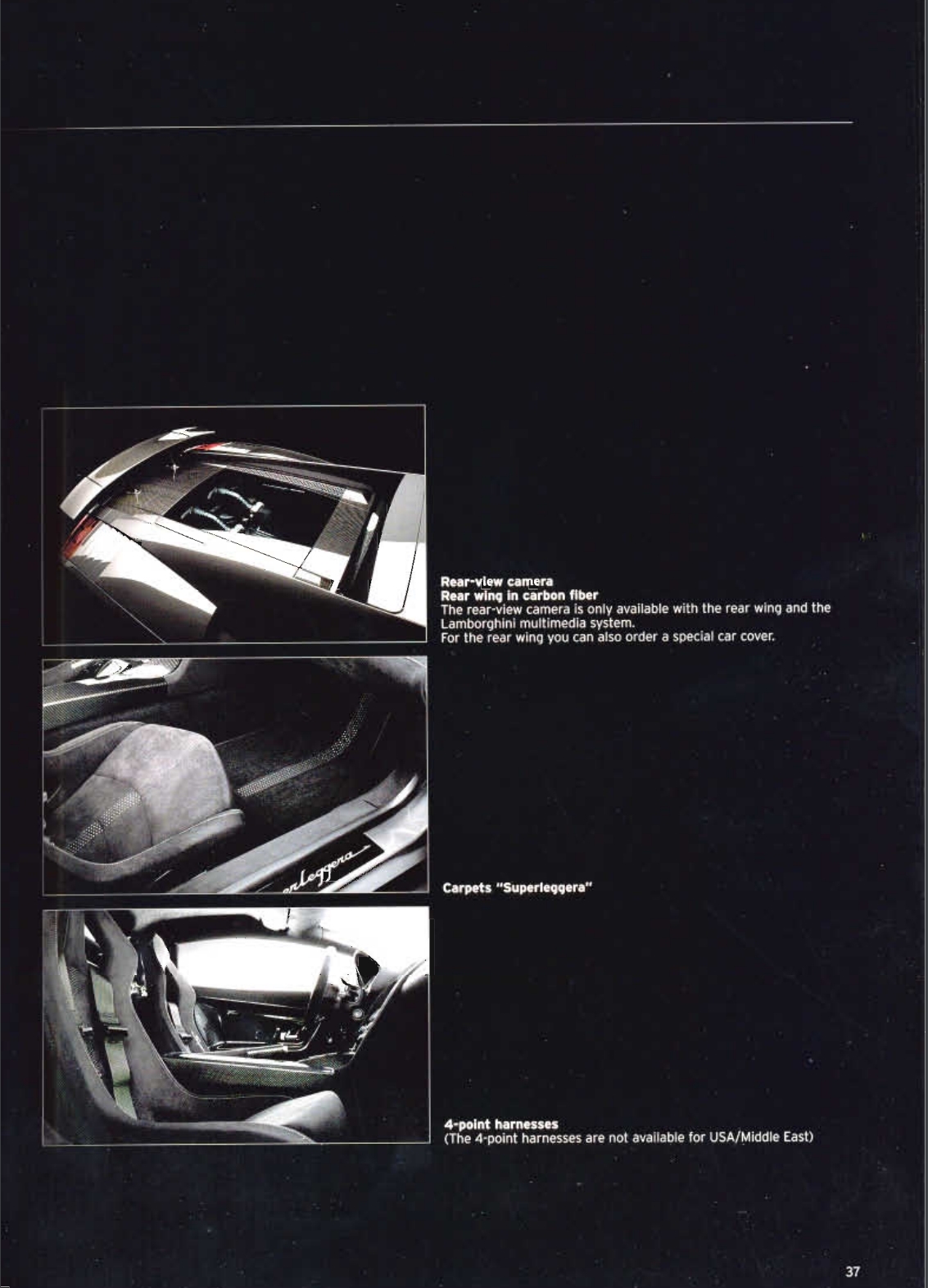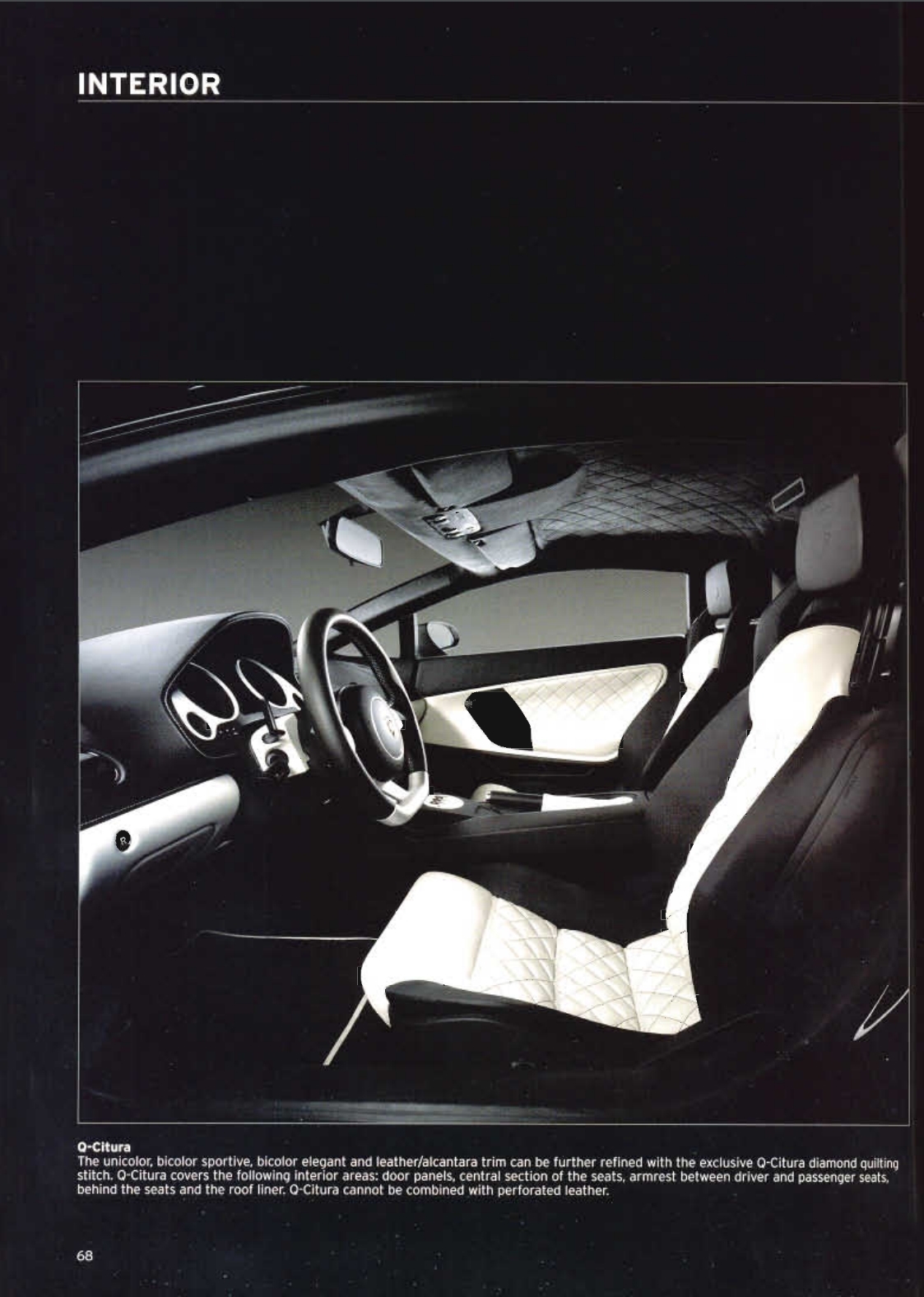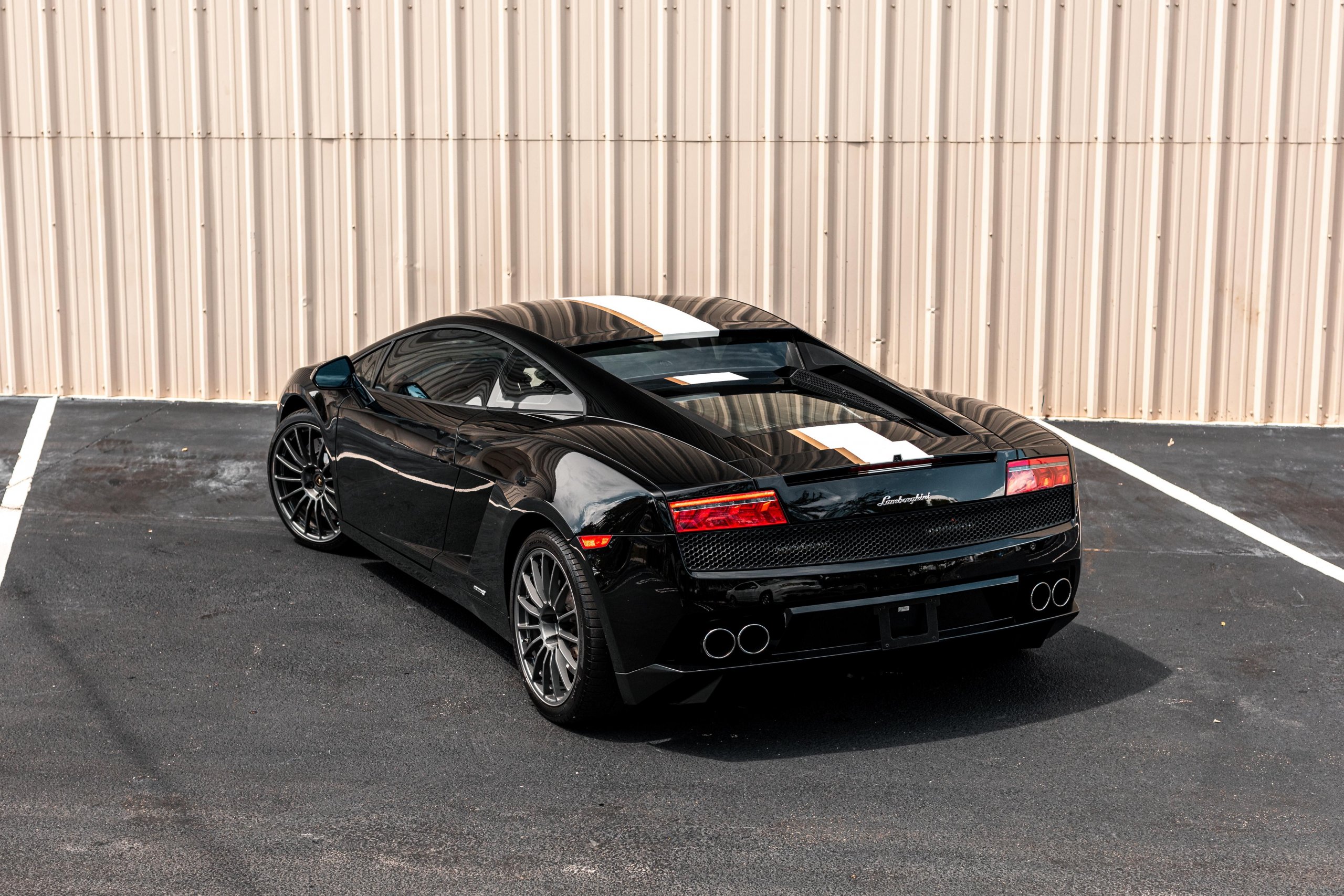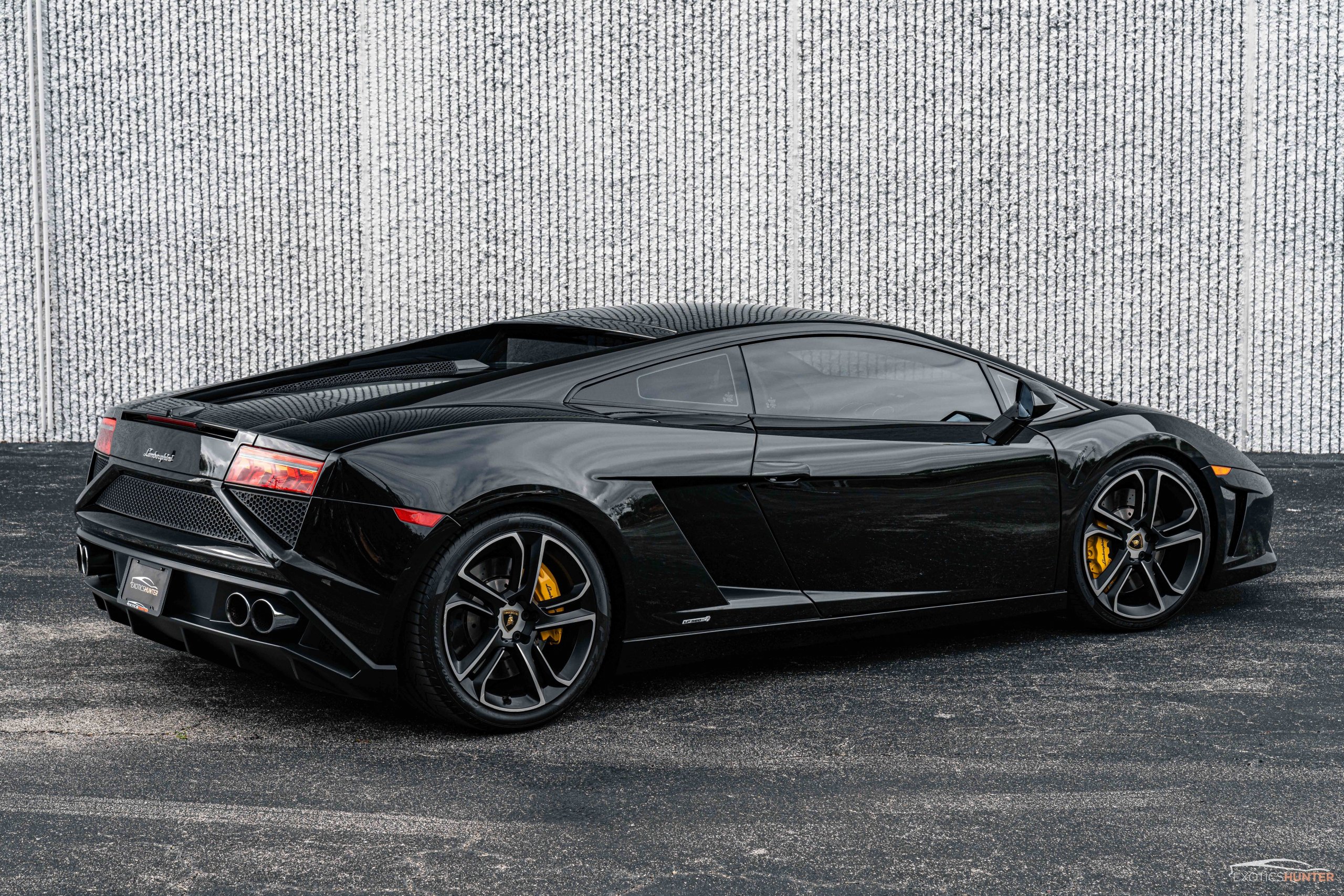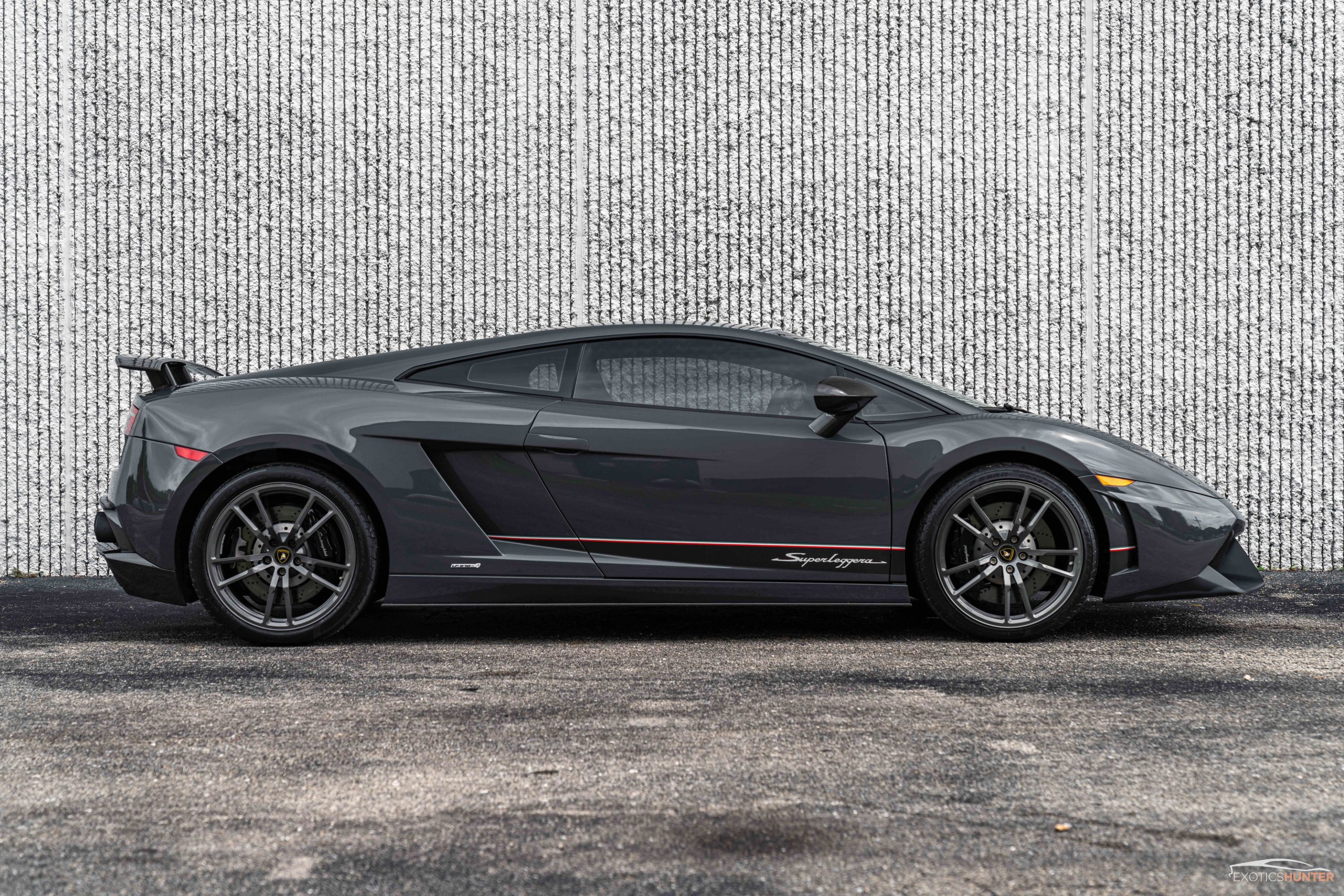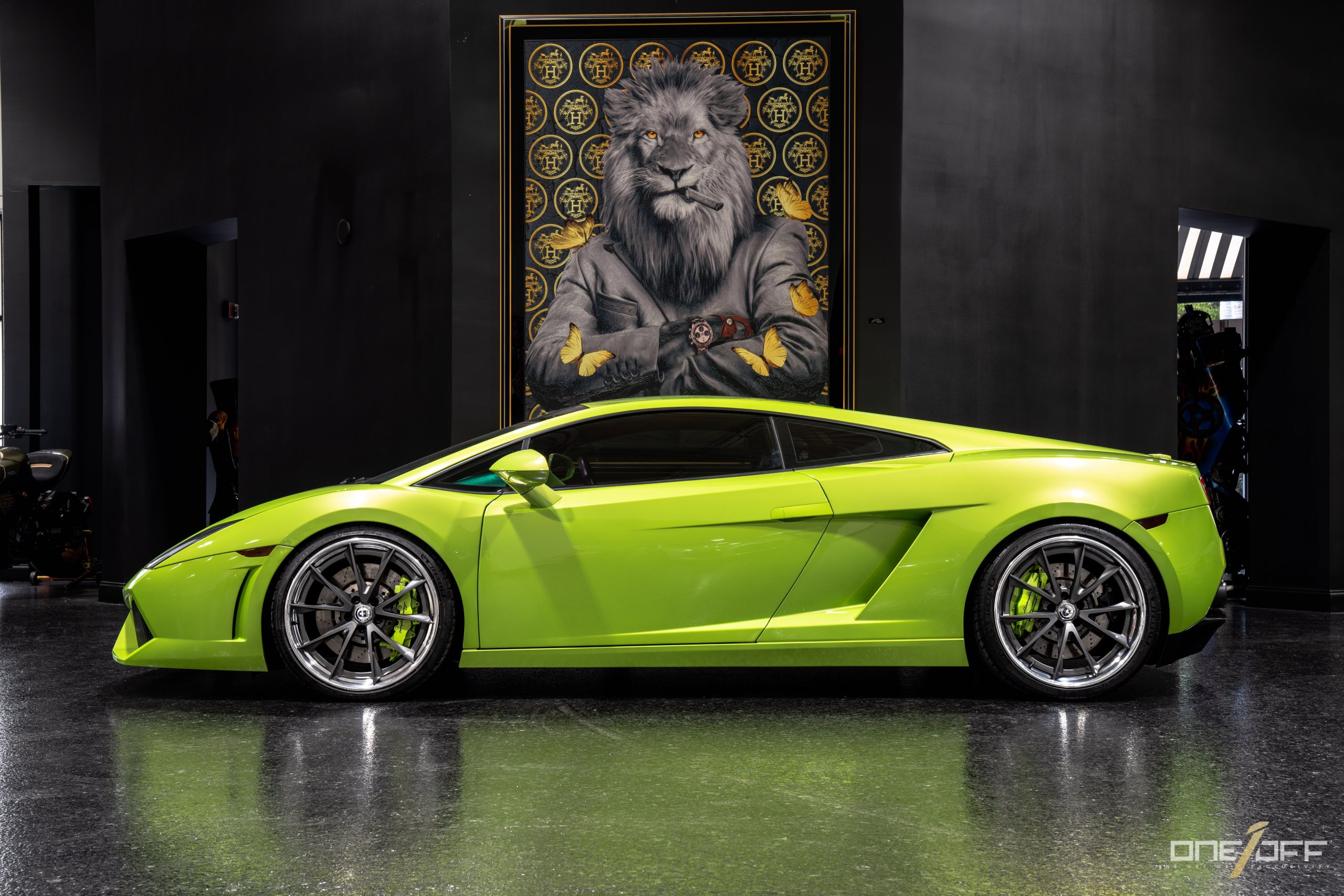The year 2004 marked a new era for Lamborghini as they were seeking to increase their revenue, and now under Audi ownership, the introduction of the "entry-level" Lamborghini Gallardo marked a solution to their problem. This also was the introduction of the V10 engine for Lamborghini.
The Lamborghini Gallardo derives its name from a prominent Canadian breed of fighting bulls, a tradition that is followed for most Lamborghini car models. The term "Gallardo" translates to "gallant" in Spanish and "striking" in Italian.
Equipped with a naturally aspirated 5.0 and later 5.2 liter V10, the engine is paired with an optional 6-speed single-clutch transmission called the E Gear (a first for Lamborghini) or a gated 6-speed manual, and an all-new all-wheel drive system.
It boasts a sleek and aerodynamic design characterized by sharp lines and angular shapes, which unmistakably reflects the distinctive Lamborghini style. Although the Gallardo's doors don't open in the same, dramatic way as the V12 Lamborghini’s, this design was groundbreaking, representing a fresh design language that had never been seen before.
Inside, you will be welcomed with a sense of luxury and purpose. The car is a product of both Audi and Volkswagen, thanks to a clean purposeful interior layout. The cabin is covered with leather, with firm seats and an elegant dashboard that still looks great today.
Over the years, the Lamborghini Gallardo has faced competition from models such as the Ferrari 360 Modena (which was later replaced by the Ferrari F430) and the Porsche 911 Turbo.
Unique in its category, the Gallardo stands out as the sole contender featuring a powerful, naturally aspirated V10 engine.
Driving Experience
Driving the Lamborghini Gallardo, you'll feel a sense of excitement and anticipation building up.
Ignite the engine, and the 5.0-liter V10 (eventually succeeded by the 5.2-liter version) comes to life.. Featuring an initial 493 hp (later enhanced to a staggering 562 hp) and 376 lb-ft of torque, this launches the Gallardo from a standstill to 60 mph in slightly above 4 seconds, an impressive accomplishment during its era.
The Gallardo has precise steering and handles corners very well, and the suspension is not hard but finds a perfect balance of comfy and performance.
Over the lifespan of the Lamborghini Gallardo, it was available with two transmission options: E-gear and 6-Speed manual transmission.
While the E-gear option can still provide an enjoyable driving experience, it's the 6-speed manual transmission that truly stands out as the most fun and engaging option.
The gated manual transmission provides a mechanical and visceral feeling that is unparalleled in today's cars which are mostly equipped with automatic transmissions.
As we reminisce about the driving experience of the Lamborghini Gallardo, it's clear that this iconic supercar has left an indelible mark on the automotive world. The styling is still eye-catching today and has stood the test of time, making it a wanted classic among car enthusiasts.
Model Changes (Breakdown by Year)
2004 Lamborghini Gallardo
The 2004 model is the first full year of production for the Gallardo, it was Lamborghini’s first baby bull which came with a V10 engine.
Featuring a 5.0 liter V10 engine producing 493 hp, it was the most powerful contender in its class compared to its competitors.
It has a low-slung profile which undeniably gives it a strong road presence. The starting base price was around $160,000 slotting it right with the Ferrari 360 Modena and the Porsche 996 Turbo.
2005 Lamborghini Gallardo
Mechanically, the 2005 Lamborghini Gallardo was the same as the 2004.
Notable changes for the 2005 Lamborghini Gallardo:
- New option: Transparent engine bonnet.
- New option: Front lift system.
2006 Lamborghini Gallardo
2006 gave birth to the Lamborghini Gallardo Spyder, featuring an open-top roof to experience the full symphony of the V10 engine. Now featuring 520 hp (25 hp increase), the Spyder also benefits from shortened gear ratios, improved shift software, and heightened pressure.
It is heavier by roughly 250 pounds due to structural reinforcements, the Spyder also matches the coupe 0-60 times in under 4 seconds.
Base price starts at $195,000 ($35,000 more than the coupe) for the Spyder.
The limited Gallardo “SE Edition” 1 of 250 units worldwide was also released. It came with a high gloss (Nero Octis color) roof, dark titanium ‘Callisto’ wheels, black exterior mirrors, and a glass engine cover.
The interior features a two-tone design, adding to the unique appeal of the SE Editon.
Notable changes for the 2006 Lamborghini Gallardo:
- New option: Navigation and backup camera available.
- New option: Carbon interior.
- New option: Upgraded Callisto wheels.
2007 Lamborghini Gallardo
Not much has changed since the 2006 Gallardo, however, Lamborghini released the Gallardo Nera Edition, which was a limited edition 1 of 185 units worldwide.
It featured black Callisto wheels, and black high gloss bodywork, which is accented with matte black components such as side mirrors, a portion of the front hood, the entire roof, and air outlets located near the rear of the car, just in front of the taillights.
Take a look inside the Nera, and you'll find beautiful two-tone black and white leather seats. The Gallardo Nera also features the distinctive lozenge-shaped stitching known as 'Q-Citura,' similar to the optional design found in the flagship LP640 Murcielago.
Notable changes for the 2007 Lamborghini Gallardo:
- New option: Comfort package which includes electric and heated seats.
- New option: Travel package which includes a cup holder and rear netting for storage.
- New option: Q-Citura interior.
2008 Lamborghini Gallardo
In 2008, Lamborghini released the Gallardo Superleggera (Italian for “super light”). With a focus on track performance and lightweight design, the Gallardo Superleggera elevates the driving experience to new heights. It was created with the intent of a raw Gallardo.
By shedding around 220lbs from the original Gallardo and incorporating a lightweight exhaust system, along with a reprogrammed ECU and a new throttle body, the Superleggera's V10 engine now generates an impressive 530 hp (10 hp more than the standard Gallardo).
Distinguishing between a Superleggera and a standard Gallardo on the exterior may be a challenge for all but the most discerning observers. Key differences include exclusive 19-inch wheels, a black decal at the bottom of the door that reads "Superleggera," and a subtle carbon fiber wing.
Apart from the numerous carbon-fiber elements both inside and out, the Superleggera also features several interior changes, such as the use of Alcantara, replacing leather on the dashboard.
Carbon-ceramic brakes are an option on the Superleggera
Base price starts at $224,000.
Notable changes for the 2008 Lamborghini Gallardo:
- Matte color and trim selection available.
2009 Lamborghini Gallardo
In 2009, the Gallardo was revamped as its second generation, adopting the LP560-4 designation.
The most significant enhancement was the introduction of a direct injection system, which increased the engine capacity to 5.2L and boosted power output to 552 hp (32 hp more than the previous generation Gallardo).
The transmission was also refined, eliminating jerkiness at low speeds and offering faster shift times.
The facelifted Gallardo's primary upgrades consist of redesigned headlights and taillights, both the front and rear lights now incorporate LED technology to illuminate the road ahead and signal braking to those behind you.
A more aggressive front bumper and an updated rear bumper with four exhaust pipes have also been updated. Additionally, new optional cross-spoke wheels are available.
Base price starts at $200,000.
Notable changes for the 2009 Lamborghini Gallardo:
- New option: Callisto and Cordelia wheels are optional.
2010 Lamborghini Gallardo
As expected, following the launch of the LP560-4 coupe, the Spyder version made its debut in 2010 for those that want an open-top roof to experience the full symphony of the V10 engine.
The powerplant remains the same as the coupe, except the convertible weighs 309 more pounds than the Gallardo LP560-4 coupe or just over 3800 pounds.
Base price starts at $244,000 ($44,000 more than the coupe).
Lamborghini launched the exclusive Gallardo LP550-2 Valentino Balboni edition, available solely as a coupe and limited to just 250 units produced.
This Gallardo pays tribute to Lamborghini's longtime test driver, Valentino Balboni, and reflects his preferred Gallardo specifications. It features rear-wheel drive, 550 hp (10 hp less than the LP560-4), and is available in a limited selection of eight colors.
Each car showcases a racing stripe extending from the front to the rear, which also reappears in the leather upholstery.
6-speed manual was also standard, while E-gear was optional.
Pricing starts at $225,000 ($25,000 more than the LP560-4 coupe).
2011 Lamborghini Gallardo
The Gallardo Superleggera LP570-4 debuts in 2011 as a coupe. The power output is 562 hp (10 hp more than LP560-4), and the torque remains the same at 398 lb-ft. The Superleggera comes standard with E-gear automated manual transmission.
The Superleggera is 154 lbs lighter than the LP560-4, and it features an even sportier suspension setup, incorporating more rigid shock settings and firmer anti-roll bars.
For the exterior of the Superleggera, Lamborghini redesigned the front with contrasting black elements that complement the rest of the bodywork.
The Superleggera is offered in an exclusive array of colors: Verde Ithaca, Giallo Midas, Arancio Borealis, Grigio Telesto, Nero Noctis, and Bianco Monocerus. Additionally, the interior boasts black Alcantara upholstery with color-matched stitching.
Base price starts at $235,000 ($35,000 more than the LP560-4).
2012 Lamborghini Gallardo
Following the launch of the Gallardo Superleggera LP570-4 coupe, the Spyder variant was unveiled in 2012 under the name Gallardo Performante LP570-4.
It has 562 hp (10 hp more than the LP560-4 Spyder) and is 143 lbs lighter than its counterpart, the LP560-4 Spyder.
The Gallardo Performante remains identical to the coupe, except for its soft top. Lowering the roof enhances the overall experience, making it even more thrilling. This allows you to truly immerse yourself in the captivating sound and feel of the V10 engine.
Base price for the Gallardo Performante starts at $248,000 ($13,000 more than the Superleggra coupe).
On top of other limited editions released, Lamborghini unveiled the Gallardo LP570-4 Super Trofeo Stradale, an even more extreme iteration of the Superleggera and it is 1 of 150 units produced.
The Super Trofeo Stradale also featured a slight increase in power producing 570hp (8hp more than the Superleggera).
By incorporating a generous amount of aluminum and lightweight 19-inch wheels, along with carbon-fiber enhancements, the Stradale manages to shed over 150 pounds. This reduces its overall weight to approximately 3,350 pounds.
The interior boasts extensive use of extremely lightweight carbon fiber for the door panels, monocoque racing seats, and center console cover. Meanwhile, black Alcantara with contrasting red top stitching covers the remaining interior elements.
The steering wheel is also covered in black suede and showcases red topstitching, adding a touch of elegance and sportiness to the cabin.
On the exterior, you will easily be able to tell it’s a Super Trofeo Stradale, because there is a large rear wing, and it’s the same one found on the race car.
It is mounted on a Super Trofeo engine cover, which keeps the quick-release levers, making it different from the conventional opening method seen on earlier Gallardo models. Instead, the cover and wing are both completely removable from the car. Naturally, both components are crafted from carbon fiber.
The exterior also features minor yet noticeable changes that give it a more aggressive appearance compared to the Superleggera, including carbon-fiber side sills, mirrors, and a bolder rear diffuser.
It comes in 3 colors, Rosso Mars (red), Grigio Telesto (grey), or Bianco Monocerus (white).
Base price for the Gallardo LP570-4 Super Trofeo Stradale is $256,000 ($21,000 more than the Superleggera LP570-4).
In 2012, Lamborghini introduced the Gallardo LP550-2 rear-wheel-drive version as a standard model, catering to those seeking a more authentic driving experience. It retained all the features and options found in the LP560-4 but with a slight reduction of 10 hp.
The LP550-2 also came with a more budget-friendly price tag, starting at $187,000 for the coupe (which is $13,000 less than the LP560-4 coupe) and $209,000 for the Spyder (saving you $16,000 compared to the LP560-4 Spyder).
2013 Lamborghini Gallardo
In 2013, Lamborghini gave the Gallardo LP560-4 which was nearly 10 years old its last final evolution before the new replacement Huracan arrived.
The power output remains constant at 552 hp for the powerplant, yet the updated LP560-4 boasts striking front and rear bumper changes characterized by triangular and trapezoidal elements. Additionally, optional Apollo wheels are now available.
Notable changes for the 2013 Lamborghini Gallardo:
- New option: Style package that includes matte black parts on the front spoiler, grilles, and rear trim in a high gloss black finish.
2014 Lamborghini Gallardo
Lamborghini debuts the Gallardo LP 570-4 Squadra Corse as one last hurrah for the final send-off for the most extreme road-going Gallardo ever built. It is 1 of 50 units built and only 15 came to the USA.
While the Gallardo Squadra Corse's 5.2 liter V-10 engine produces an identical 562 hp and 398 pound-feet of torque as the rest of the Gallardo series (and the Gallardo racecar), Lamborghini has managed to reduce the all-wheel-drive supercar's dry weight to just below 3000 pounds by extensively utilizing carbon fiber and aluminum.
The Gallardo Squadra Corse not only takes cues from the Super Trofeo racecar but also incorporates a number of its parts, such as the massive carbon composite rear wing and hood.
This rear wing reportedly produces triple the downforce of a standard Gallardo spoiler, while the carbon composite hood includes a quick-release mechanism for easy removal.
In addition to the striking rear wing, the Gallardo Squadra Corse differentiates itself from other Gallardo models with a decal strip, reminiscent of the Italian flag's green, white, and red hues, that begins just ahead of the V-10 engine's side-air intakes.
The hood, diffuser, air intakes, and wheels all feature black paint. The Lamborghini Gallardo Squadra Corse is offered in (Giallo Orion) yellow, (Bianco Monocerus) white, (Grigio Thalasso) gray, or (Rosso Mars) red, and the brake calipers come in red, black, or yellow options.
The interior of the Gallardo Squadra Corse showcases an extensive use of carbon fiber on components such as door panels, standard racing seats (with the option for regular seats), the center console, and the handbrake frame.
Alcantara adorns the seats and even the lower portion of the dashboard, adding a touch of luxury to the robust composite materials.
Base price starts at $260,000 ($4,000 more than Superleggera LP570-4).
Lamborghini Gallardo's Common Problems
The Lamborghini Gallardo is considered to be a fairly bulletproof supercar. Many people have driven their Lamborghini Gallardo's for extended distances, some even exceeding 100,000 miles (111k miles example), proving its reliability.
This challenges the traditional perception that supercars lack reliability.
However, it is essential to keep in mind that all cars, even supercars, can have issues and it is crucial to perform a Pre-Purchase Inspection (PPI) from an authorized dealer or experienced independent mechanic to reveal all issues.
- Transmission issues: Owners with the E-gear transmission have reported issues with the transmission, including slipping gears and difficulty shifting. These issues can be caused by worn transmission components or problems with the transmission control module. While E-gear clutches typically are known to last a long time, there is the possibility for needed clutch replacement. Owners are required to treat an E-gear transmission like a manual transmission, otherwise, the clutch will wear out very quickly
- Brake pad squealing: Some owners have mentioned experiencing squeaky brakes, and there are several methods to eliminate the noise. One such modification involves removing and cleaning all brake pads, applying noise-reduction lubricant, and deglazing all brake rotors.
- Oil leaks: Early Gallardo models are susceptible to oil leaks, particularly around the oil pan and the rear main seal. It is essential to have these areas inspected and addressed as needed.
- Paintwork issue: While the paint match between panels may not be perfect from the factory, a glaring mismatch is a strong indicator of paintwork. Check the door jams and hinges for any signs of shoddy paintwork or repairs. They are often the areas that get the least attention from a body shop. Also, run your fingers along the edges of the hood, doors, and panels.
- Wheels and tires: Tire lifespan varies depending on the car's usage, but rear tires typically last around 10,000 miles, while front tires may last up to 15,000 miles. Gallardo's are highly sensitive to tire-related issues. A slight pressure difference in the rear tires can cause significant pulling and twisting during acceleration or throttle lift. The primary cause of such issues, however, is the use of aftermarket wheels. While modifying your Gallardo to suit your preferences is understandable, altering the rolling diameter ratio between the front and rear tires can cause issues with Lamborghini's AWD system. This results in a rolling resistance that feels like braking when taking off, leading to premature clutch wear, slippage, and differential wear.
- Aftermarket sound system: The factory-installed radios, especially in the 2004-2005 models, are known to be not the greatest quality. Replacing them is not a major issue, but caution is required. Installing additional speakers behind the seats could negatively affect the ECUs located there due to the magnets. Additionally, improper wiring may lead to electrical draws that rapidly deplete the batteries.
- Front-end scrape: Since these vehicles have low ground clearance and the front-end lift feature wasn't introduced until 2005, it's important to inspect the underside of the front bumper for scrapes and cracks. To protect the car from rock chips, consider using a clear protective film. This is particularly beneficial for models with a three-layer pearlescent paint, as it can be challenging to find a perfect match for touch-ups, making it preferable to avoid the need for repainting.
- Mirrors: Windshield-mounted rearview mirrors in the Gallardo’s are highly susceptible to leaks. Over time, the auto-dimming fluid in the mirror may degrade, causing noticeable fluid movement within the mirror's surface. Ideally, before this issue arises or as soon as it becomes apparent, replace the mirror with a non-dimming version, which should cost less than $150.
Recalls
Electrical System: Engine Control Unit (ECU) (Recall no. 18V833000)
Lamborghini is recalling certain 2011-2014 Gallardo Coupe and Gallardo Spyder vehicles. The Engine Control Unit (ECU) software may erase trouble codes after the ignition is turned off, not illuminating warning lamps and preventing drivers from being warned of safety system problems the next time that they are driving.
Maintenance and Ownership Costs
When compared to other supercars in the high-performance category, the Lamborghini Gallardo is regarded as having relatively modest maintenance needs.
However, it is important to remember that regular maintenance and repairs will still be necessary, and the costs can vary depending on whether you take your car to a dealer or an independent mechanic.
Here is the suggested service schedule and intervals per Lamborghini:
1 YEAR OR 9,000 MILES
- Replace engine oil and filter at least once a year
- Comprehensive Inspection of Factory Specifications
- Complete Factory Diagnostics
2 YEARS OF 18,000 MILES
- Replace Engine Coolant
- Spark Plugs
- Engine Oil and Filter
- Inspect and replace V-belt and Tensioner
- Pollen Filters
- Brake Fluid
3 YEARS OR 27,000 MILES
- Replace Engine Oil and Filter
- Replace Gearbox Oil
Here is a rough estimate of typical service costs associated with the Lamborghini Gallardo:
- Oil Change - As low as $200 for independent mechanics and $400 for dealers.
- Minor Service - Typically includes oil change, cabin filters, and engine filters. The cost from a dealer is around $1,100
- Major Service - Typically includes all the above plus spark plugs, brake flush, trans flush, expect about $2,500 from a dealer.
- Tires - A set of high-performance tires like Michelin PS4 will cost about $2,000.
- Brakes - For steel brakes, would cost about $4,000 to replace. Rotors that are carbon ceramic which should last forever. Aftermarket brake pads that are OE equivalent will cost about $800 for a full set.
- Clutch - For E gear clutch replacement, it will cost about $5,000 for independent mechanics and $7000 for dealers. Meanwhile, a 6-speed manual car clutch should last a very long time but are dependent on driver habits.
Options List
The Lamborghini Gallardo has a list of options and packages that customers can choose from.
In the initial years, Gallardo's did not come with an extensive range of factory options. It is advisable to search for vehicles featuring transparent engine covers, as this appealing detail showcases the engine.
Another available option included painted calipers, which gave a nice touch to the exterior.
A popular option was to opt for the upgraded paint with a pearl, 4-layer, or in later years; a matte finish, which often adds a premium to the car's price.
Another feature introduced in 2005 was the front lift system, which facilitated raising the car's front end, enabling smoother navigation over driveways and speed bumps.
From 2006 and beyond, Lamborghini introduced features like navigation systems and rearview cameras, as well as Q-Citura, carbon fiber interior components, and upgraded wheel options.
From 2008 and above, a very small handful of Gallardo customers also went through the Ad Personam program which was a factory-in-house customization program, that allowed customers to personalize their Gallardo with unique exterior and interior colors, materials, and features that were not available on regular production models.
Any Gallardo that went through the Ad Personam program is extremely rare, and very desirable, particularly since few customers opted for this route at that time.
2005 Lamborghini Gallardo Options
2008 Lamborghini Gallardo Superleggera Options
2009 Lamborghini Gallardo LP560-4 Options
Some of the more desirable options to look for include:
- 6-speed manual
- Front Lift system
- Optional wheels
- Q-Citura interior (2009 and above Gallardo)
- Carbon ceramic brakes
- Pearl, 4-layer, or matte finish paint
- Ad Personam exterior or interior (rare)
Lamborghini Gallardo Price and Values
The Best Lamborghini Gallardo to Buy
When it comes to buying a Gallardo, there are a few key factors to consider that can affect the car's long-term value.
Some of the criteria break down into a few categories.
In terms of future value appreciation, the best option when purchasing a Gallardo is to opt for the 6-speed gated manual transmission model.
Gallardos with the second-best potential for appreciation in value includes performance versions like the Superleggera, Super Trofeo, Valentino Balboni Edition, and Squada Corsa. While they come with a higher price tag, their depreciation rate is significantly lower.
Although the LP 520-2 models are less expensive and have lower horsepower, they are still anticipated to appreciate in value, as their design emphasizes driving experience over their all-wheel-drive counterparts.
If you prefer an E-Gear Gallardo, it is advisable to choose a facelifted model from 2009 or later, as Lamborghini significantly improved the transmission issues present in earlier versions.
The last revision Gallardo’s from 2013 will be the most desirable ones, as they are not very common these days.
However, on the other hand, all Gallardo's including the first pre-facelift (2004-2008) will remain a strong purchase simply because as hybrid technology becomes more widespread among cars, naturally aspirated V10s are becoming highly sought after by collectors and enthusiasts in the current market.
In addition to limited edition models, the condition and mileage of the car are also important factors to consider when buying a Gallardo. Many have been driven hard and have been highly modified.
But the ones that are more likely to retain their value in the long run and will fetch the most money will be well-maintained cars with low mileage.
Therefore, it's important to do your research, compare prices, and look for well-maintained cars if you are considering purchasing an Gallardo with the goal of not losing any money.
Conclusion
In conclusion, for around ($140,000+) the Lamborghini Gallardo is a great choice for a first supercar that you can rely on.
While the Ferrari 360 (or F430), and Porsche 911 Turbo are among the other available options, the Gallardo stands out with its exceptional technology, unparalleled comfort, user-friendly design, and dependable performance.
To conclude, when considering a supercar, the Gallardo stands out as a great choice that will leave you with no regrets.
Car Hacking Shortcuts
6-speed manual Gallardo’s will always be the most sought-after.
Front lift option is nice.
Spec matters: Look for any Ad Personam colors or optional colors.
Facelift Gallardo's from 2009 and up are great hacks.
Special editions like the Superleggera, Valentino Balboni edition, Super Trofeo, and Squada Corsa are future collectibles and are undervalued.

